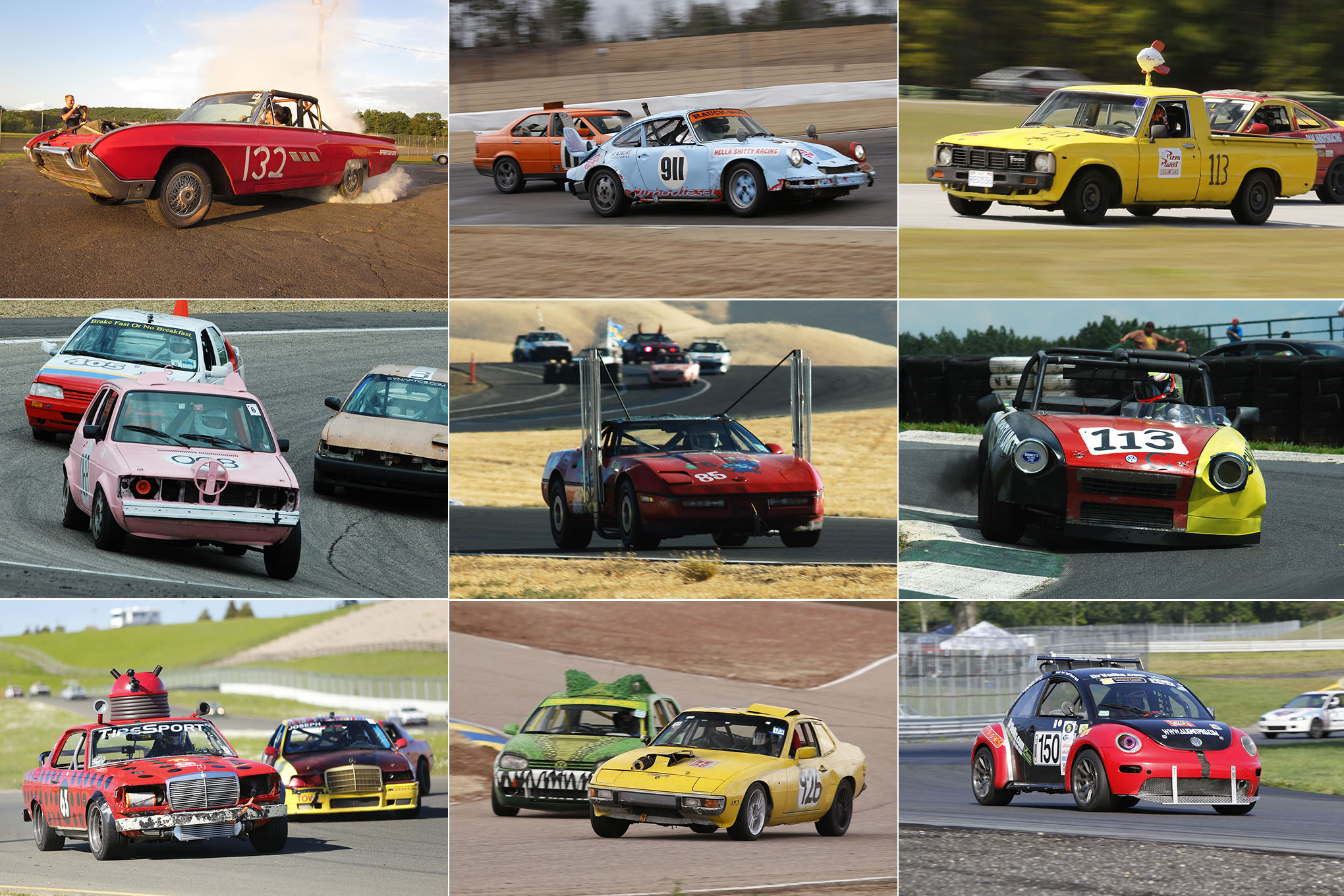
Diesel Race Cars of the 24 Hours of Lemons
Ever since Rudolf Diesel‘s invention ran for the first time in 1894, fanatical advocates of diesel engines have been working to prove the superiority of their favorite technology. In our series, we offer the opportunity to do just that, with compression-ignition machines going toe-to-toe with slaves to the spark plug on our race tracks since the very first race. Some have run petroleum fuel, some have run virgin vegetable oil, and a few have run used cooking grease. Their degree of racing success has run the gamut from hilariously bad to pretty impressive, and we’re here to tell the story.

We’re going to try to cover each of the diesel-powered vehicles to have raced in the series, but we might have overlooked a couple here and there. Let us know if we missed yours and we’ll do a Hella Sweet Lemons Car of the Week feature on it later.
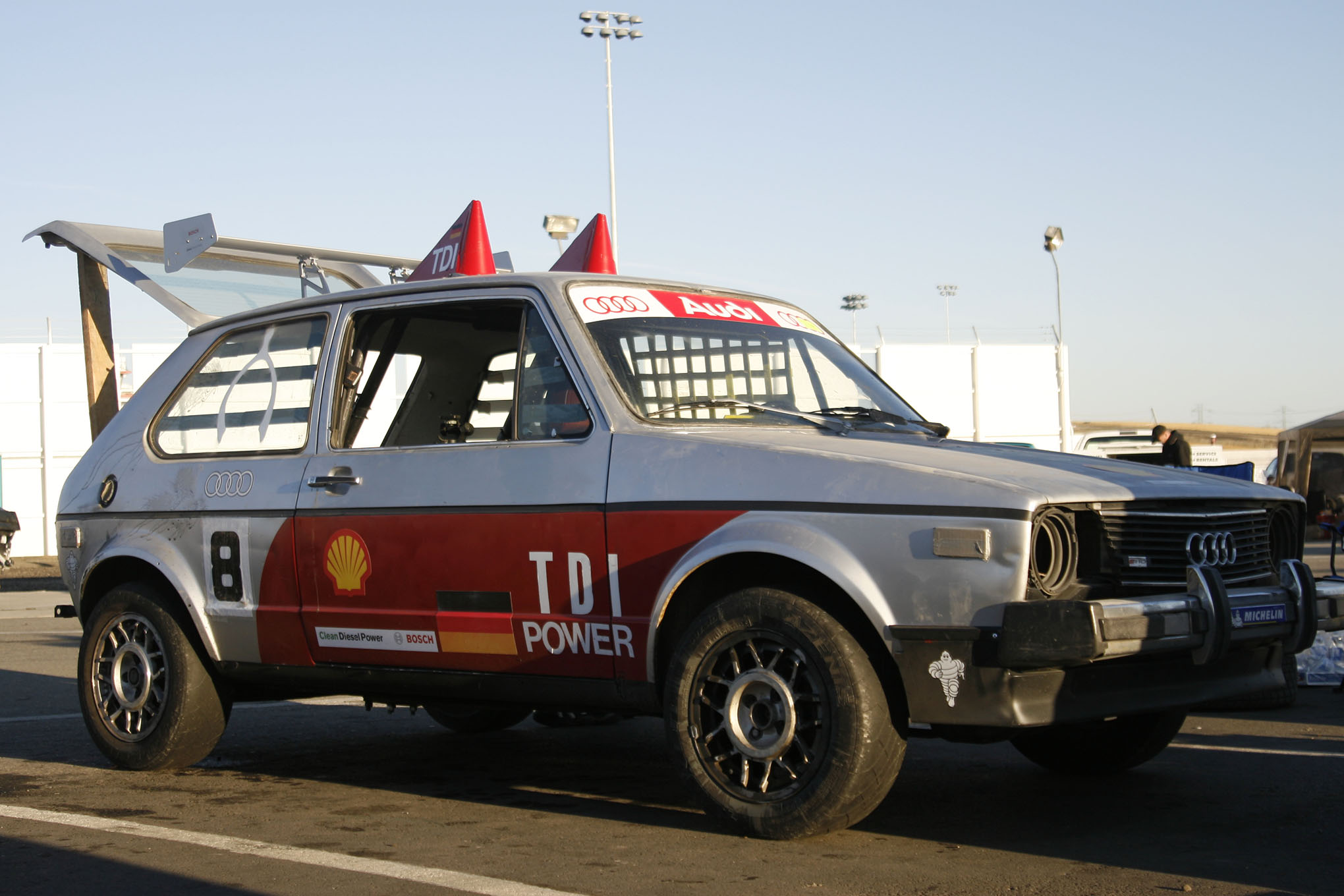
Back in October of 2006, Lemons Race Number One took place at Altamont Motor Speedway in California. Safety rules were more primitive than today’s and speeds were lower, but the assortment of hooptie vehicles was nearly as good back then as we see in 2018. There was a French car, of course, and a big Buick wagon… and a diesel Volkswagen Rabbit.

The Audi Motorsport team painted up their car to resemble its very very distant cousin, the Audi R10 TDI, but instead of the Audi’s 650 diesel horsepower, this 1977 Rabbit packed the original naturally-aspirated engine, which was rated at 48 incredibly miserable horsepower when new.
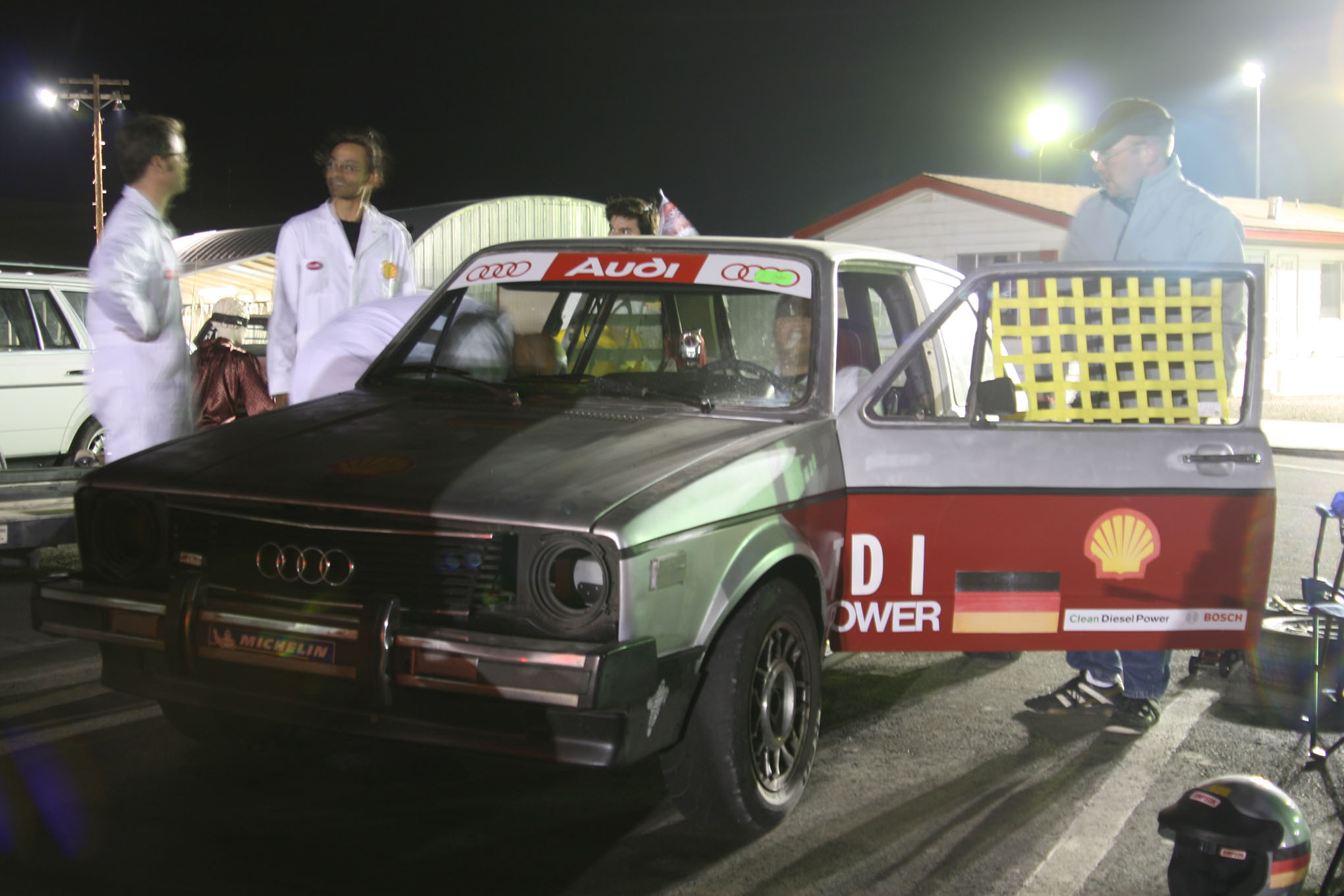
The team did 737 half-mile laps and finished 19th out of 34 entries, a performance that might have won the team the Index of Effluency in later years.
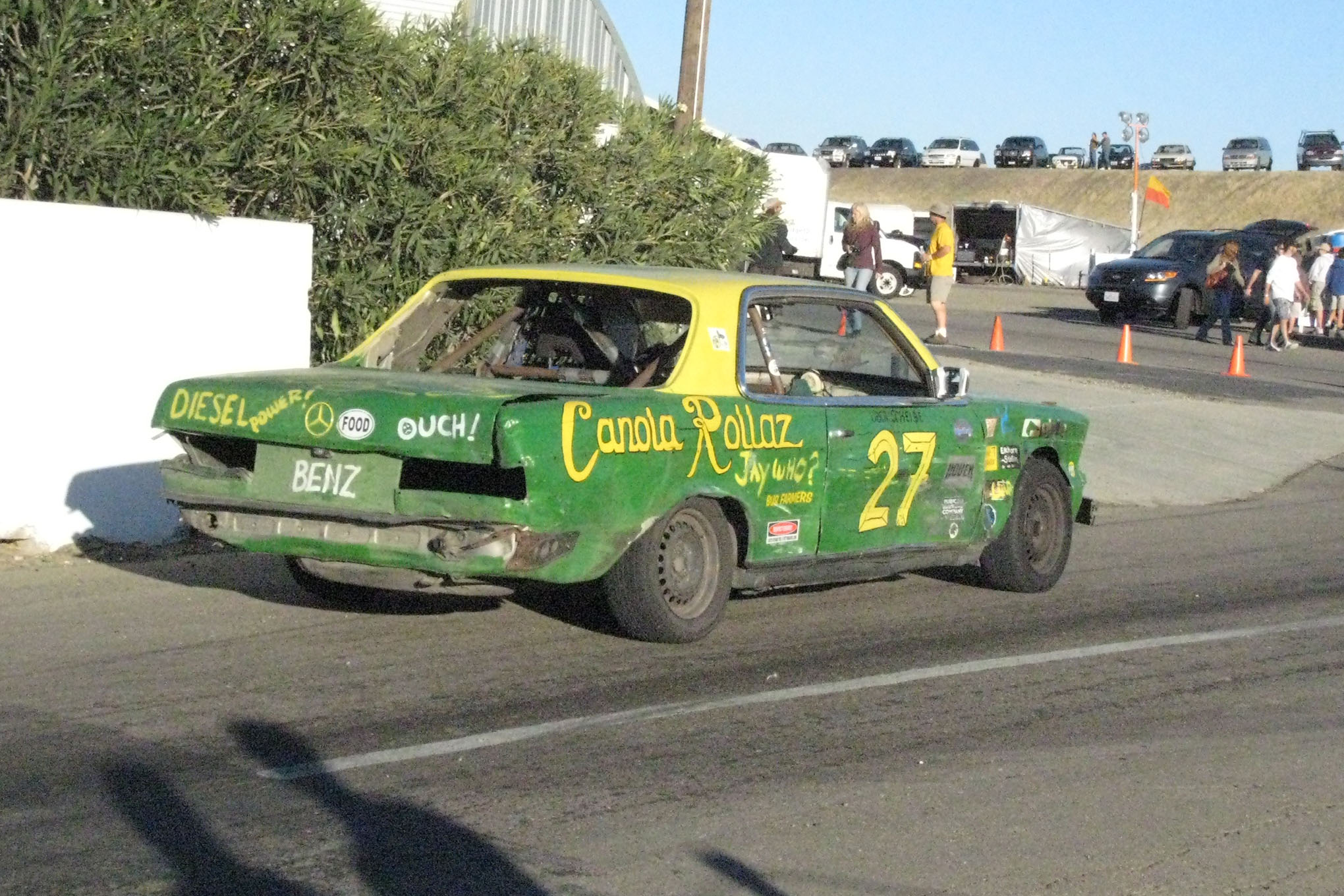
At the second Lemons race, at Altamont in July of 2007, a team called the Canola Rolla’z brought a Mercedes-Benz W123 coupe powered by the famous OM617 turbodiesel engine, running on used french-fry grease. This car finished 27th out of 83 cars that weekend.
A few months later, at the third Altamont race, the Canola Rolla’z added a second car, the “Grease Lightning” OM617-powered W123 coupe burning waste vegetable oil.
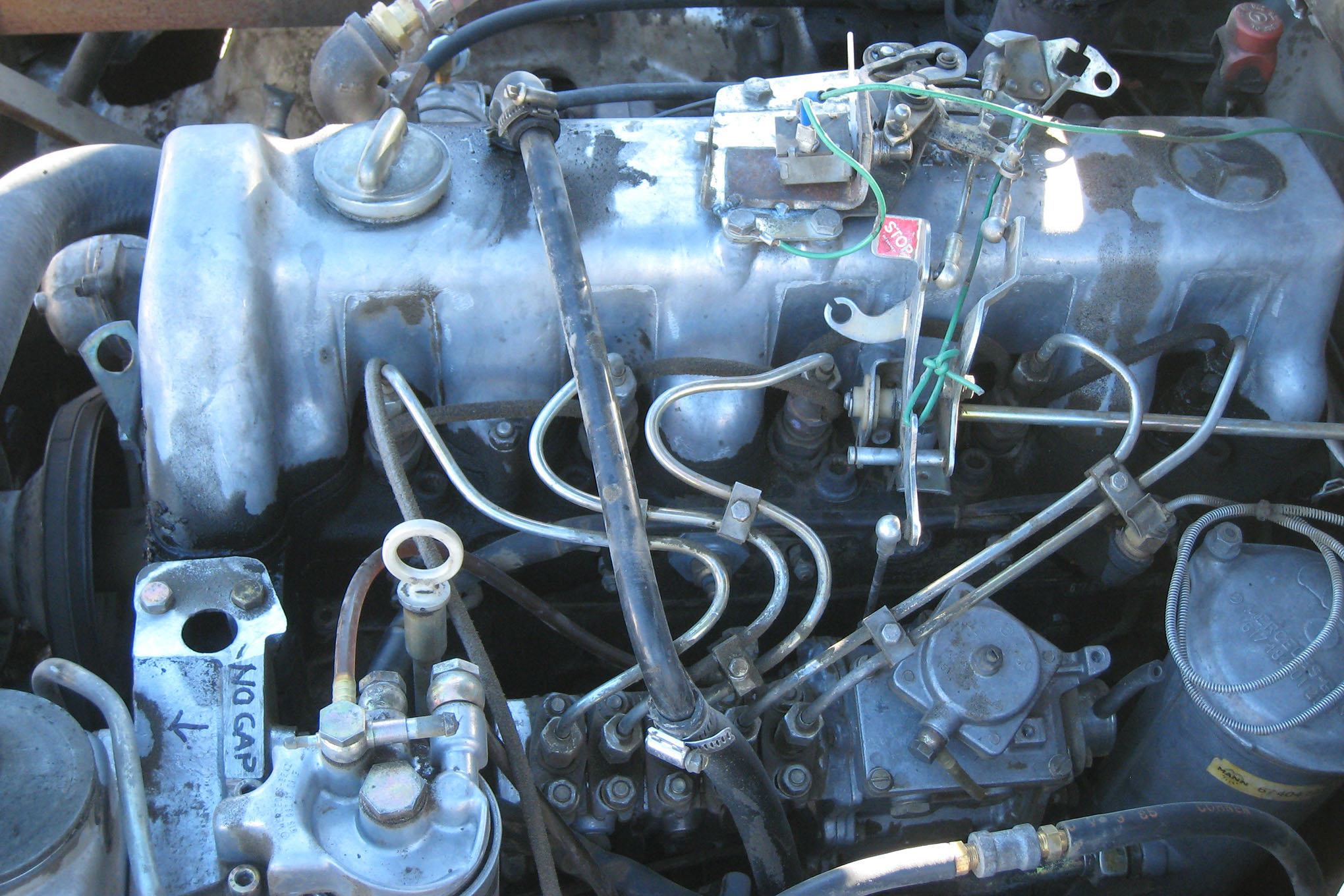
The Canola Rolla grabbed P19 and Grease Lightning took P69, in a field of 87 teams. We didn’t know it at the time, but we’d be seeing many more diesel W123s competing as the years went by.

What the series really needed was a diesel-on-diesel battle, with oil-burning cars made by different manufacturers on the same track, and we got that very thing at the first South Carolina race in 2008. Team On The Run From Nuns brought this OM617-powered W123 sedan, which developed a bit of a smoke problem as the race wore on.
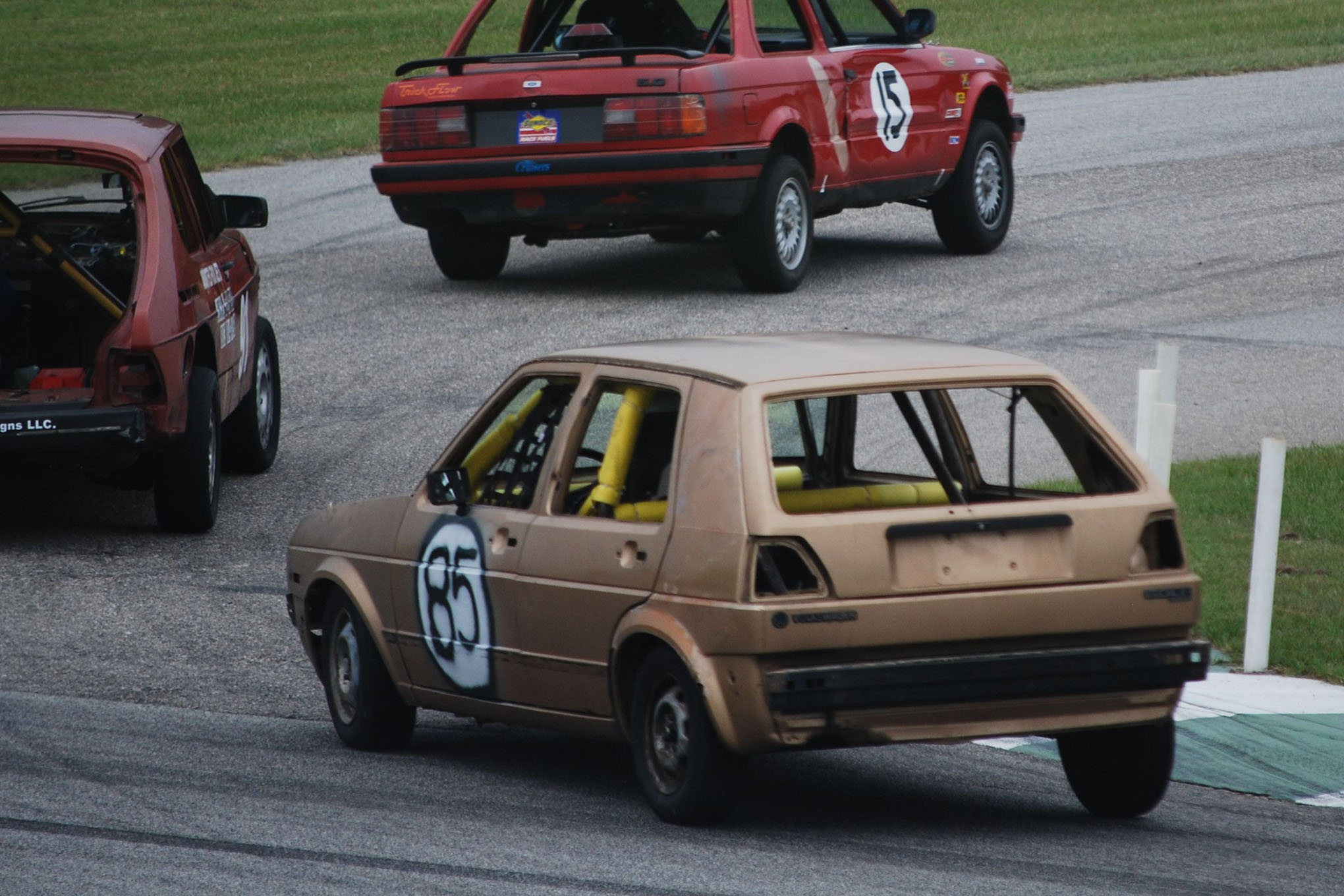
Carrying the Wolfsburg flag into the diesel fray, the Karmann Geddon Golf managed just 35 laps and finished 70th out of 74 entries; meanwhile, the On The Run From Nuns Benz turned 416 laps and finished in P25. Clearly, the W123 was shaping up to be a reasonably competitive Lemons car.
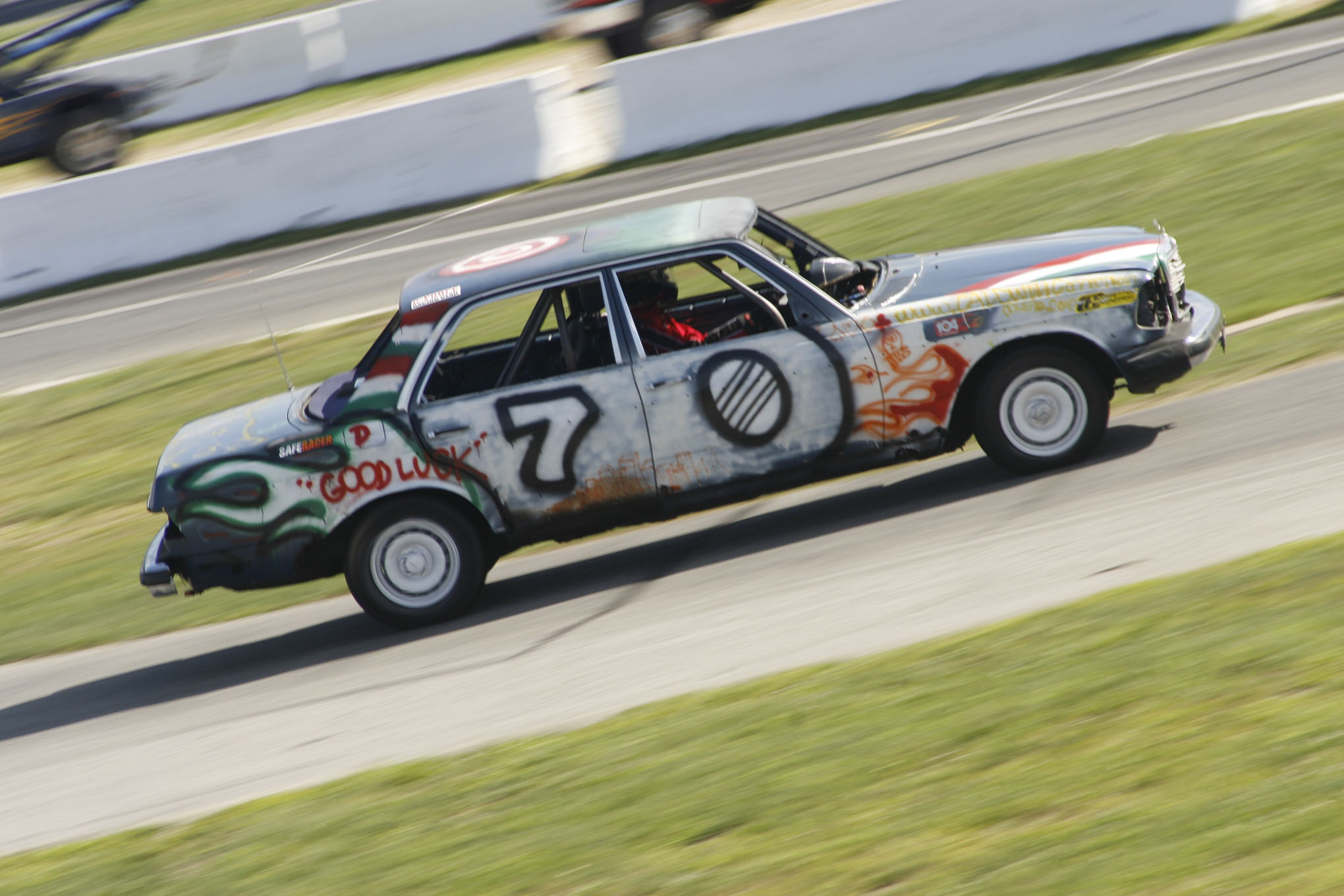
Lemons headed to Connecticut soon after the 2008 South Carolina race, for the inaugural Lemons New England event. At that race, the Stugots Le Mons team showed up with their OM617-ified W123, and set about drawing the ire of the other 24 teams by pinballing both slowly and erratically around Stafford Motor Speedway’s intimate confines.
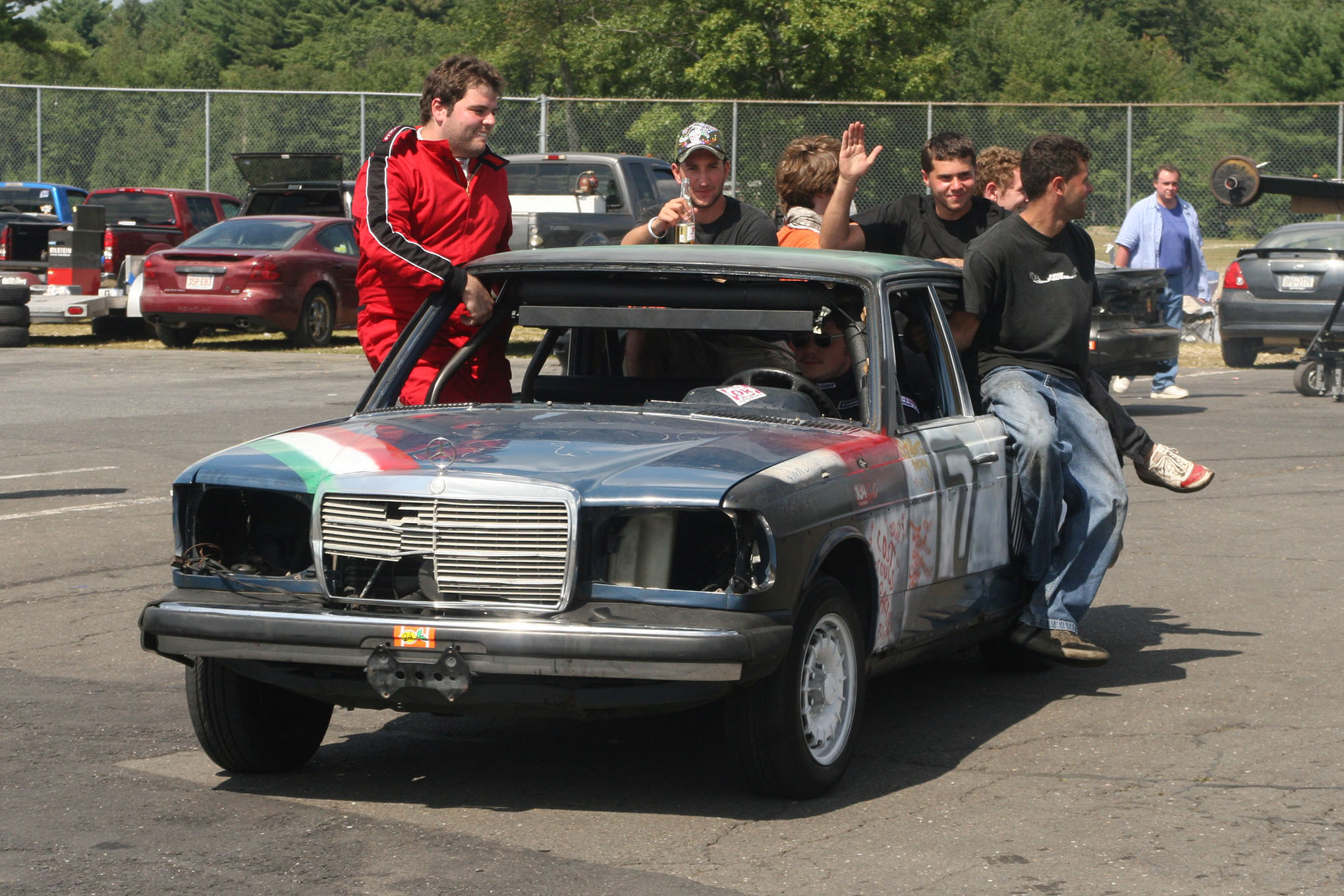
Unfortunately for the Stugots crew, that was the era of the now-discontinued People’s Curse, in which teams cast ballots to destroy their most hated competitor. The Stugots Le Mons drivers got the most votes and were told to bring their Benz over for the ultimate Lemons penalty…
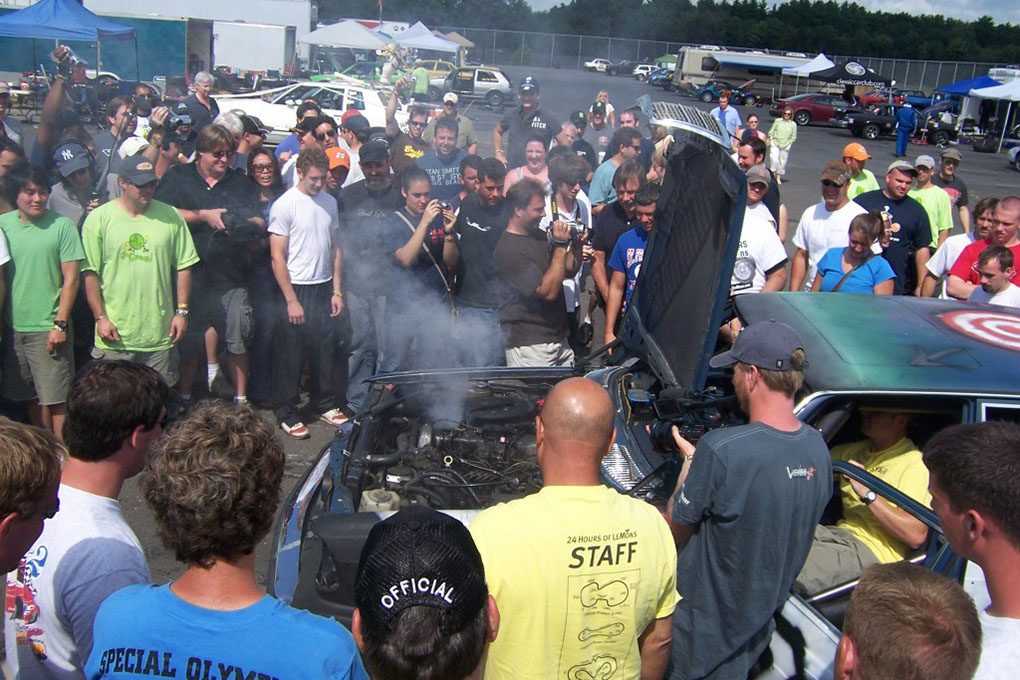
…which, in this case, turned out to consist of putting a brick on the accelerator pedal and then pouring various substances into the oil filler, including clam chowder, Milk of Magnesia, fabric softener, beer, nuts and bolts, etc. This did not kill the incredibly tough OM617, however, and eventually the crowd relented and allowed the now-rough-running Mercedes-Benz to get back onto the track and finish the race. In the end, the Stugots Le Mons car made 200 laps and avoided DFL with a 24th-place finish.

It took a while before another team felt sufficiently brave to enter a new diesel-powered race car in our series, but when it happened it was big: this 1963 Ford Thunderbird, which won the Index of Effluency at the 2010 New England race while powered by a BMW M21 turbodiesel.
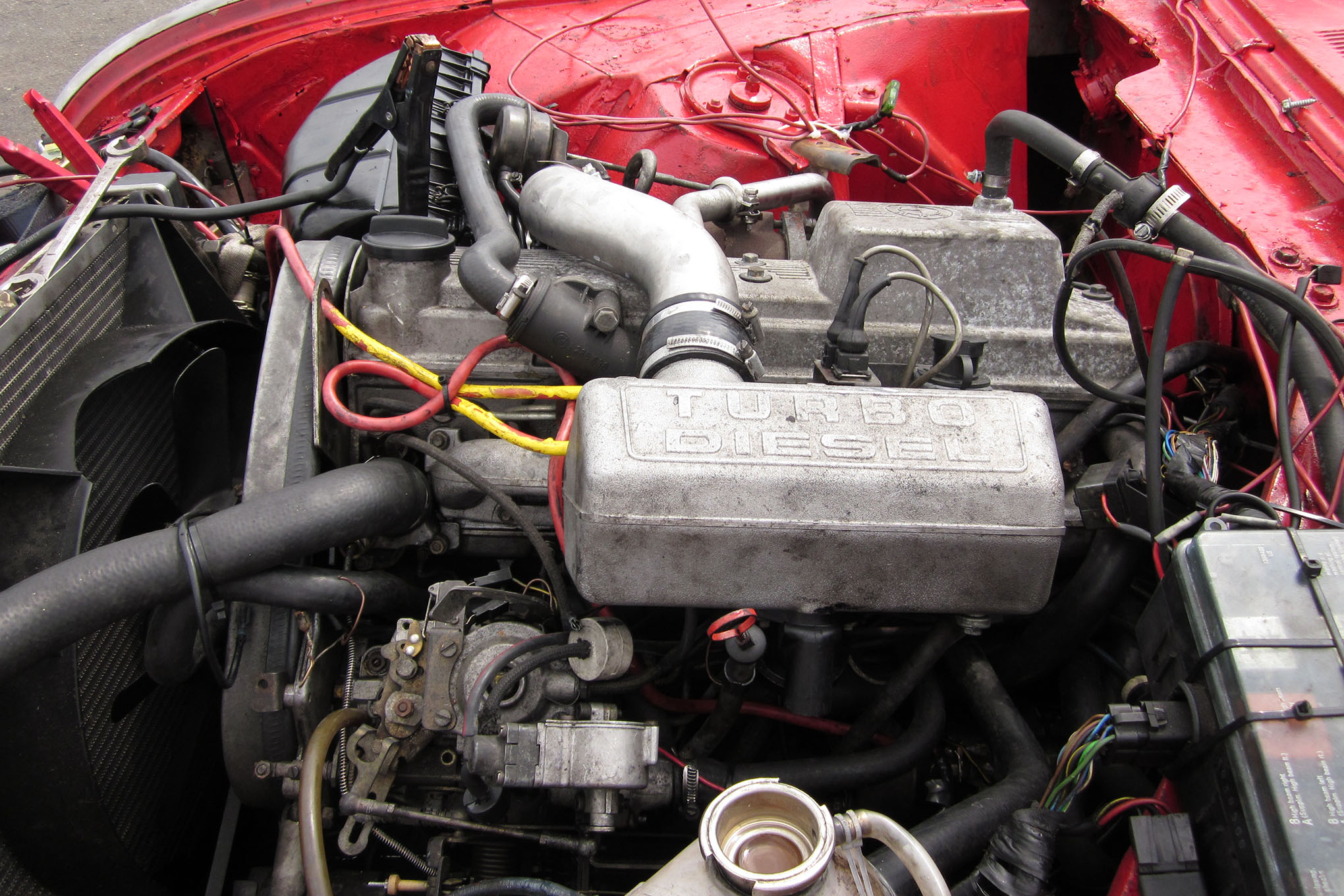
This car was an early Speedycop creation (if you don’t know about Speedycop’s many amazing Lemons machines, just go here and here and take a look); it started its racing career with a Ford 390 V8, then received a BMW M70 V12 swap with ammo-can intake and scary junkyard ignition. After that, pulling the engine out of a BMW 524TD made sense, especially considering that the BMW M21 went into some US-market Fords and Lincolns during the 1980s.
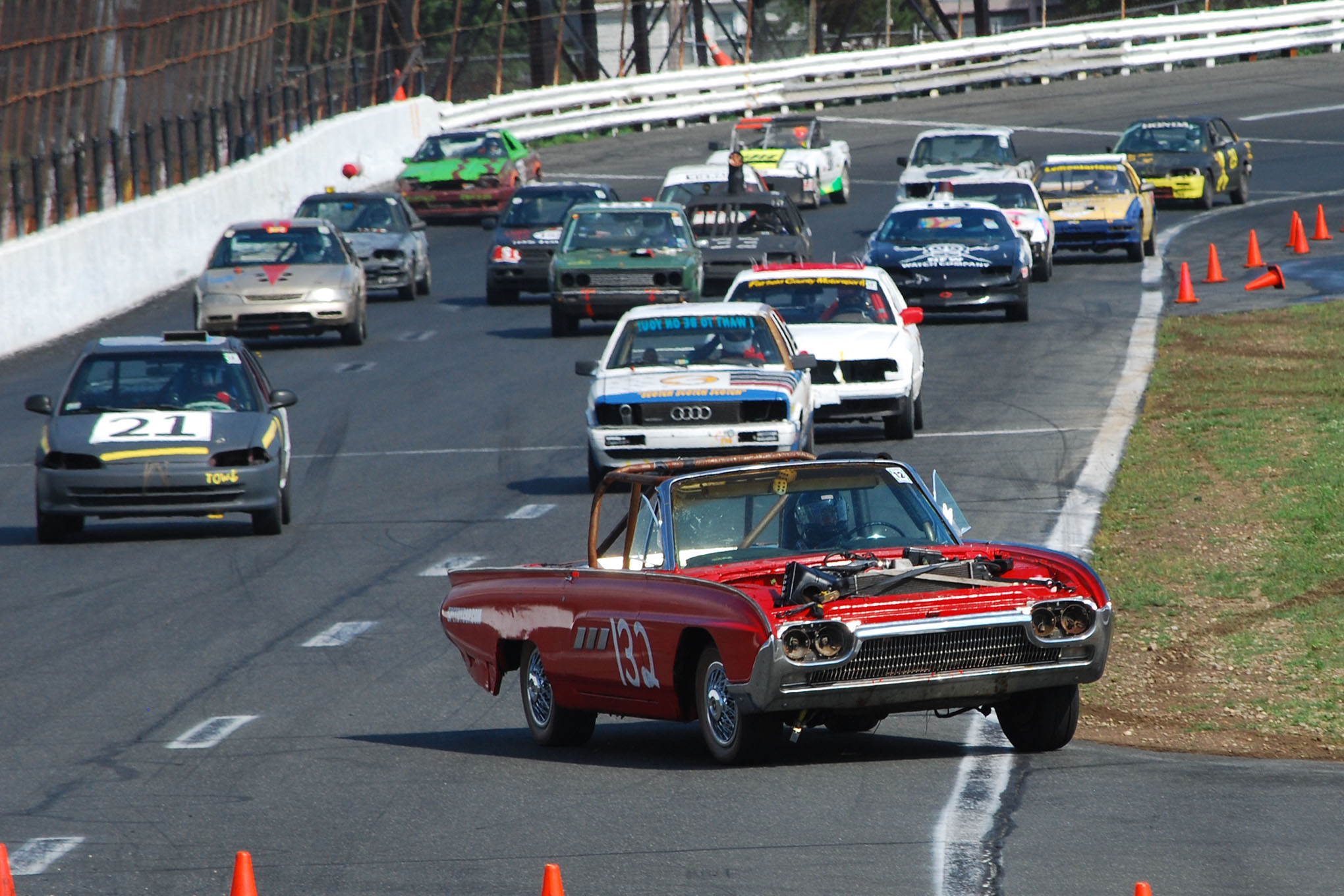
The Police Brutality BMW Diesel-powered T-Bird ran shockingly well, finishing 48th out of 77 entries and nearly beating a stock 1963 Chevrolet Corvair. Sadly, that was the last time we’d see a BMW diesel engine in our series.
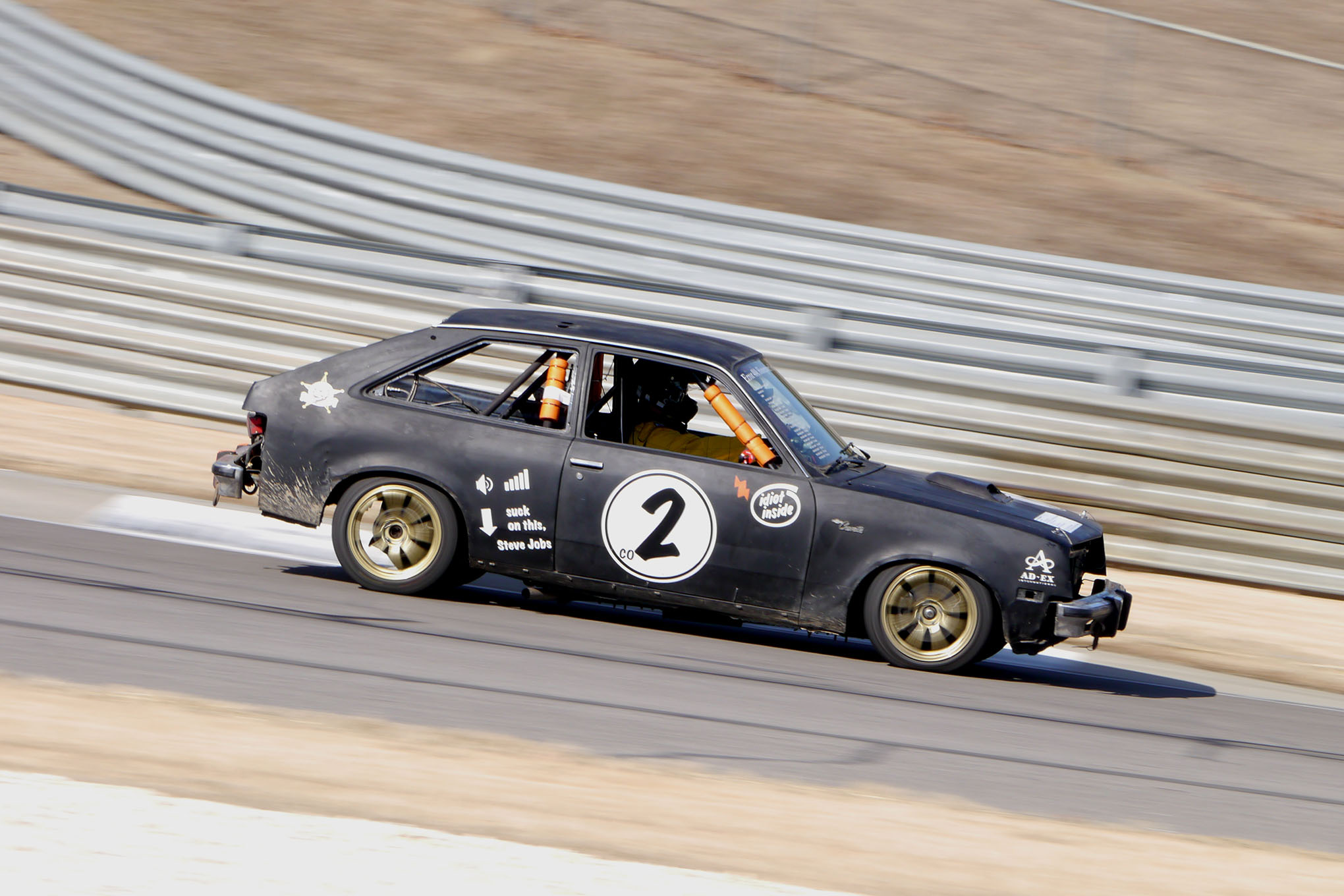
General Motors put Isuzu diesel engines in some of its US-market econoboxes during the 1970s and 1980s, and soon-to-be-legendary Zero Budget Racing of Ohio won instant Index of Effluency gold by bringing this 1982 Chevrolet Chevette Diesel to the 2011 Detroit Irony race.
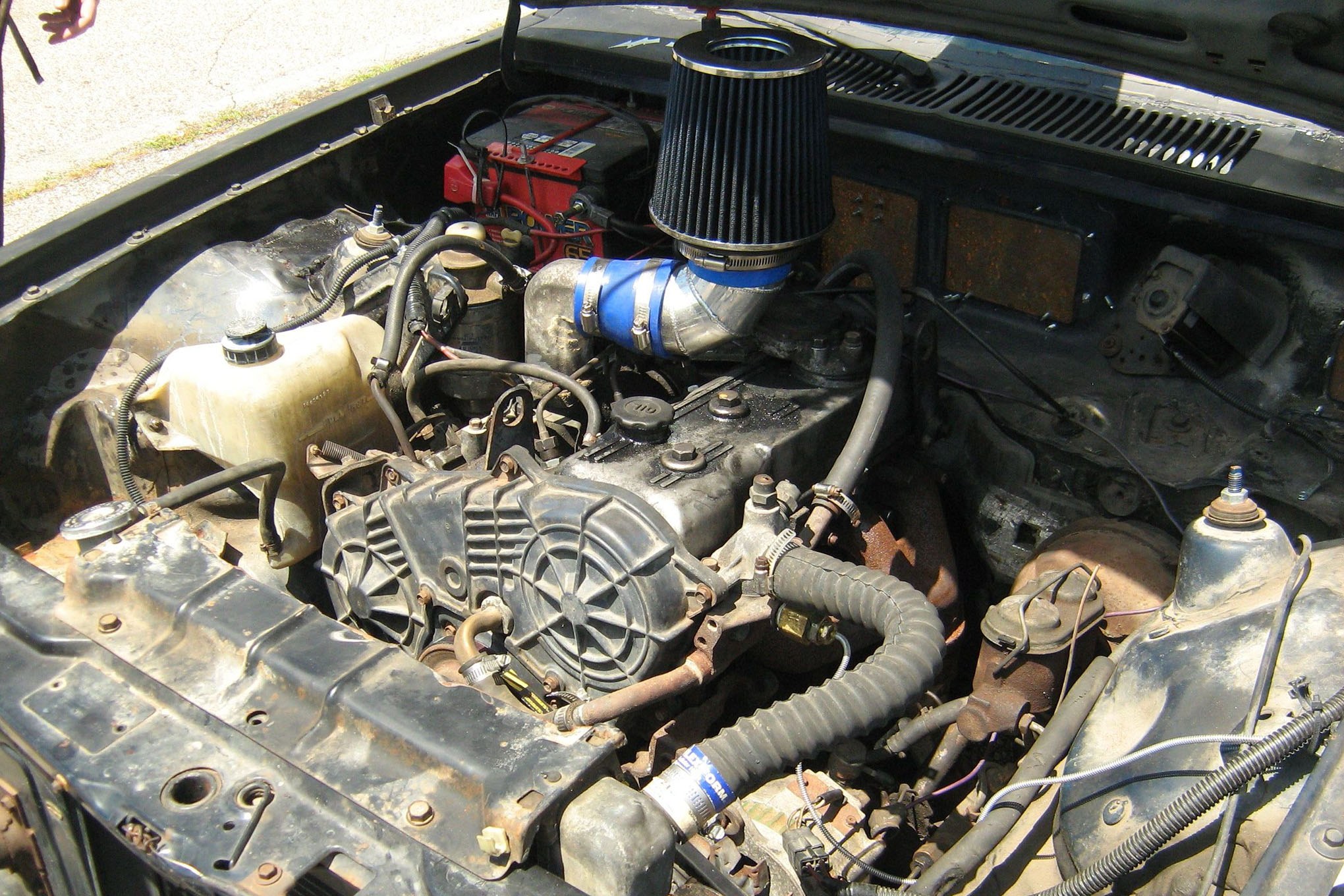
The Zero Budget Chevette, complete with 52 leisurely Isuzu horses under the hood, still competes to this day, appearing at the Kentucky Demo Derby race last summer.
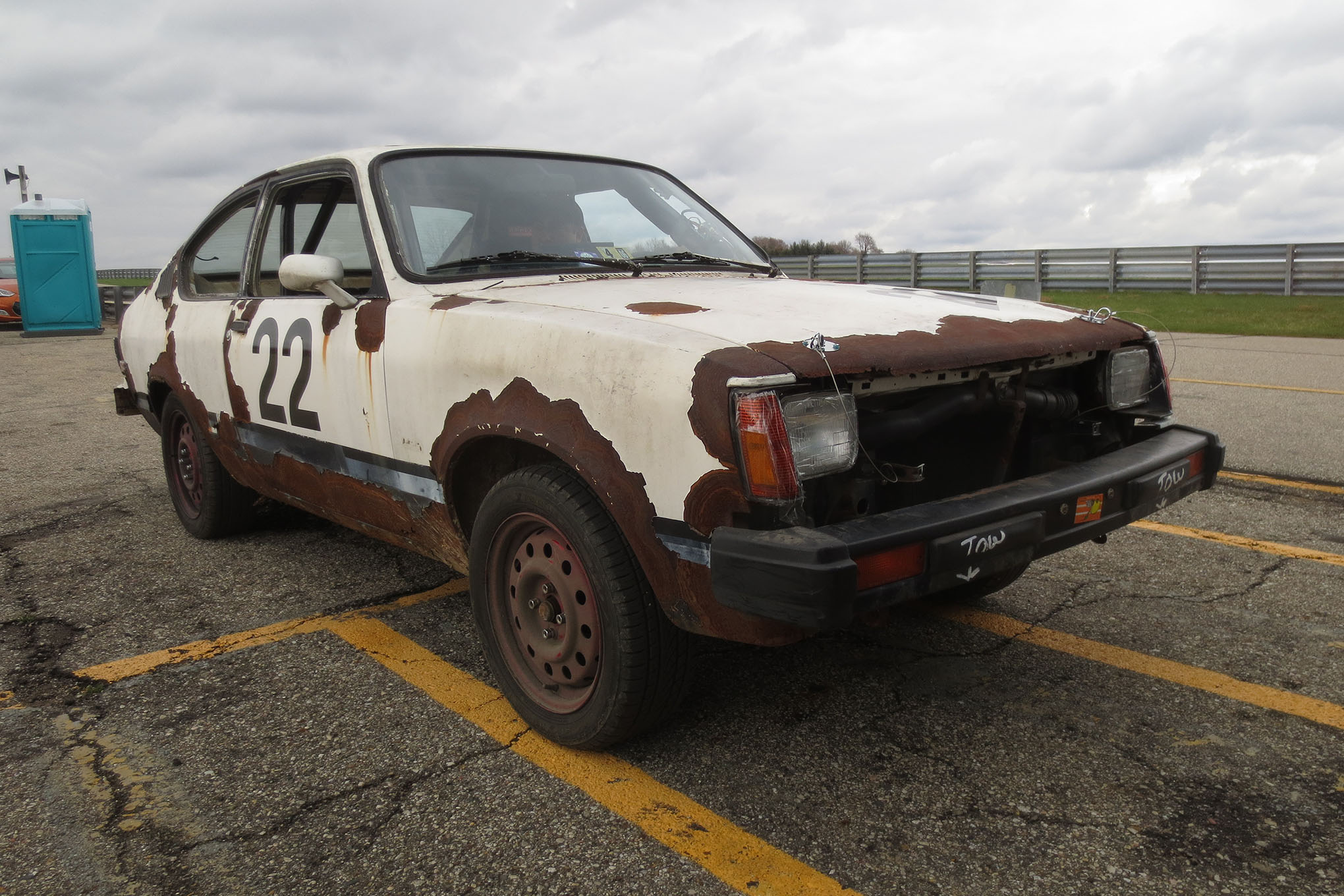
The Chevette had an Isuzu sibling sold here, also with 52 smokey horses beneath the hood, and the Zero Budget crew managed to find a terrifyingly rusty (but still running) example. This car served as a very icky pit vehicle and Judgemobile for a couple of years, then got race-prepped for its debut at the 2013 Cure For Gingervitis race in Michigan.
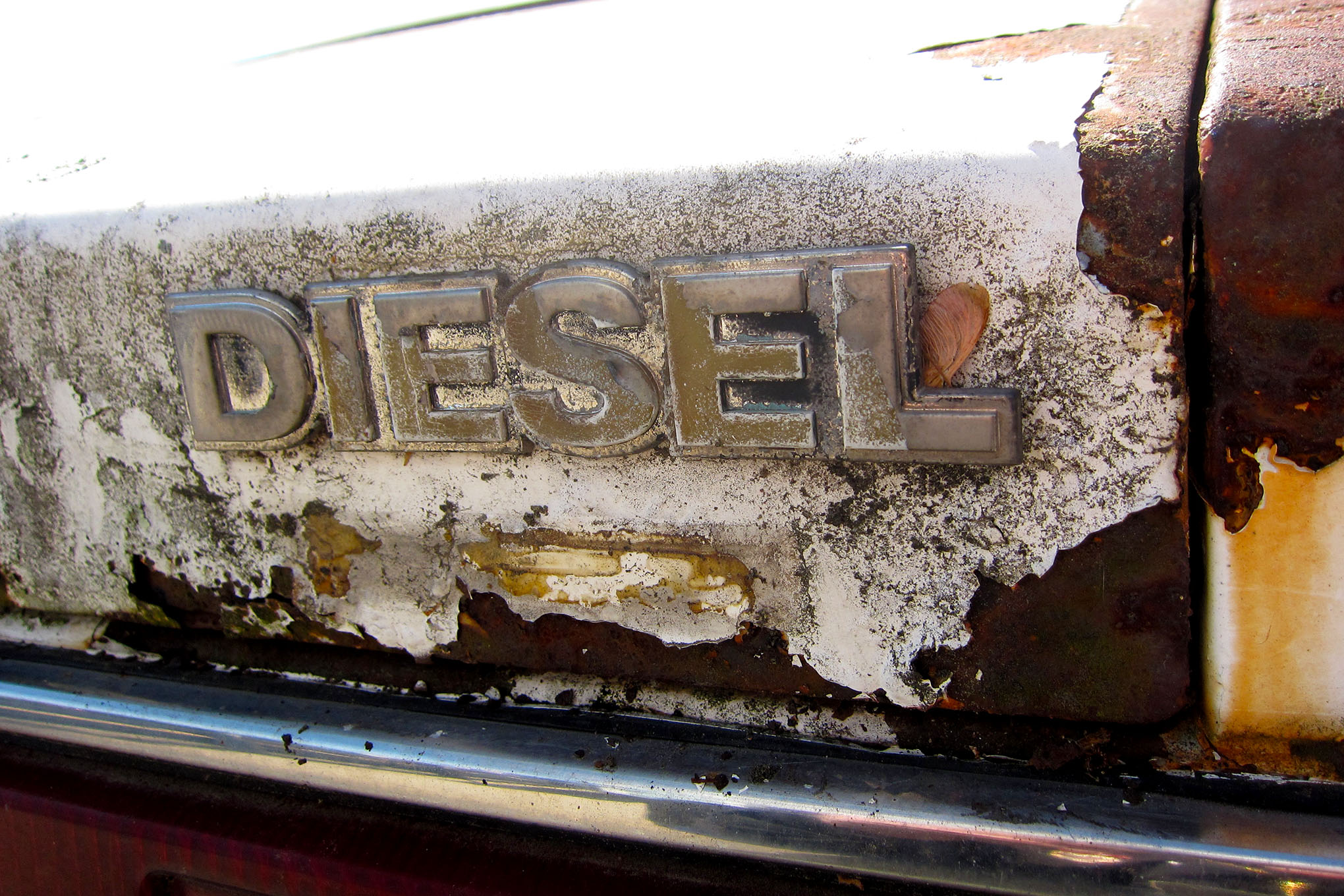
With this very efficient engine rattling away, stint time tended to be limited by the driver’s bladder capacity rather than fuel-tank size.
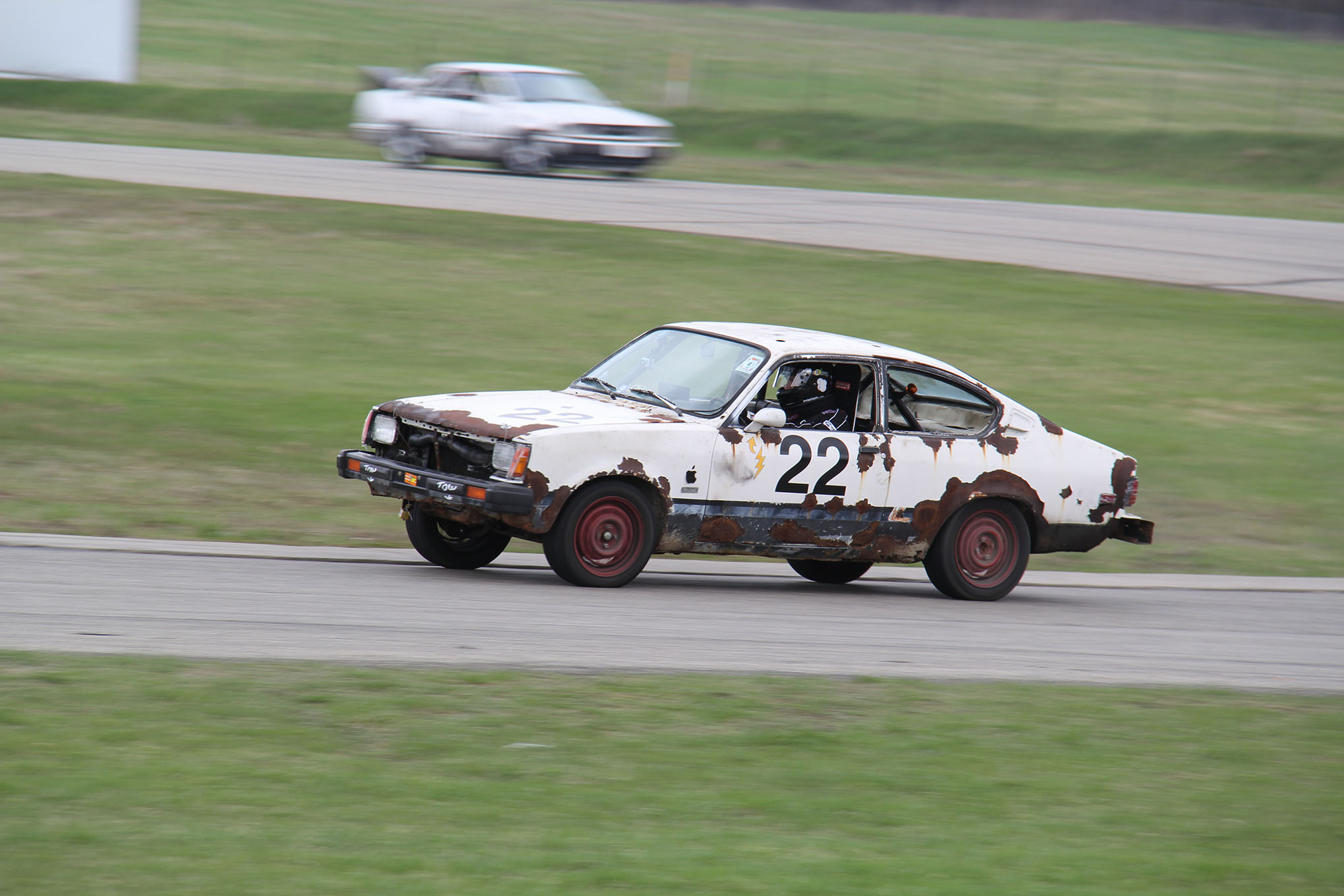
The I-Mark Diesel was even slower than the Diesel Chevette on the track, but it ran flawlessly all weekend and finished 42nd out of 68 cars. That made for an easy Index of Effluency win, giving Lemons cars powered by Isuzu diesel engines a 100% IOE-winning record. Sadly, the I-Mark got wrecked later in 2013, but the good news is that Zero Budget Racing replaced it with one of the greatest— admittedly, gasoline-burning— cars we’ve ever seen.
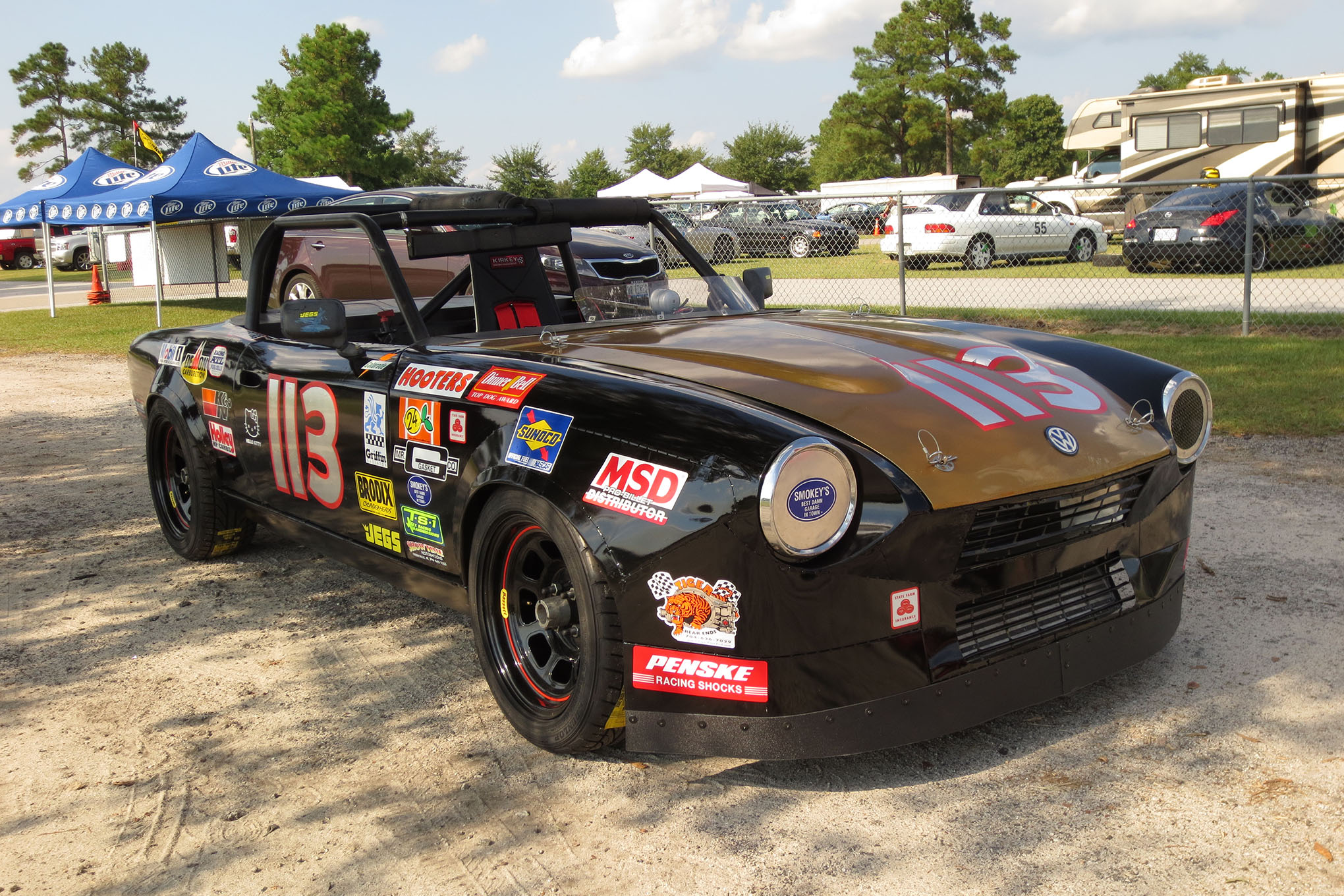
Though diesel zealots sing the online praises of the Volkswagen TDI four-cylinder engine to the point of making it very clear that any motor vehicle powered by such an engine should run away with any sort of race, we didn’t see any TDIs in Lemons racing until Team Smokey Unit showed up to the 2012 Southern Discomfort race with this TDI-swapped 1980 Fiat 124 Sport Spider.
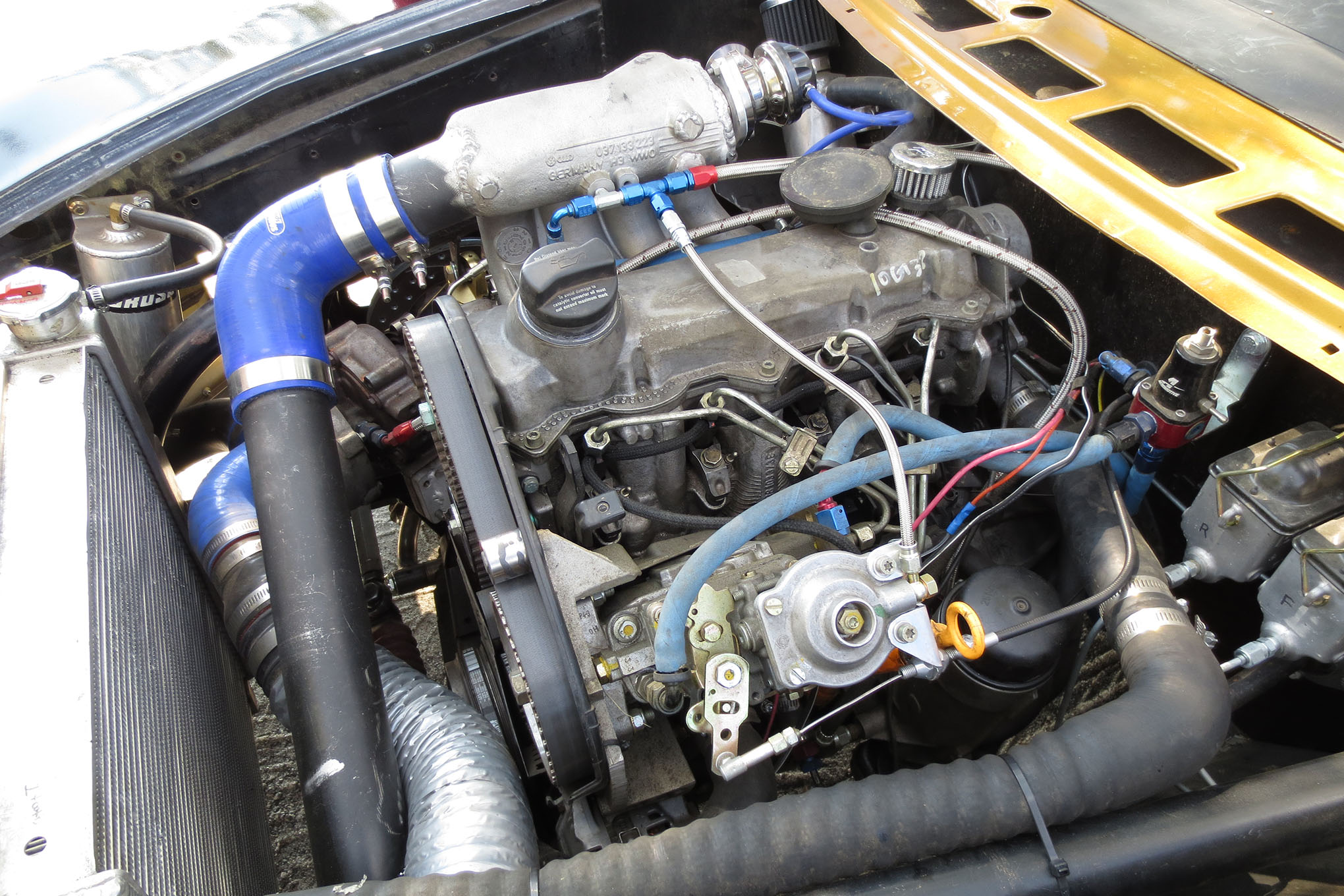
This car had competed in some sort of long-forgotten 1980s racing series (presumably with Fiat engine) and had what looked like a pretty nice aftermarket suspension, so the wise and just Lemons Supreme Court justices buried it in penalty laps at first. Then it became clear that the Smokey Unit suffered from horrifying reliability problems, and eventually we began letting it race without penalties.

The Smokey Unit’s drivers have real skill, and when nothing breaks they can crack the top ten of a competitive Southern race, with their combination of quick lap times and long stint times. It’s by far the quickest and most competitive diesel-powered car in Lemons history, though the OM617 tortoises generally beat this TDI hare when it comes to end-of-race lap counts.

Team Greased Pig brought their waste-vegetable-oil-burning 1982 Volkswagen Rabbit to the 2012 Loudon Annoying and 2012 Halloween Hooptiefest races at New Hampshire Motor Speedway, finishing 58th out of 75 and 94th out of 117, respectively.
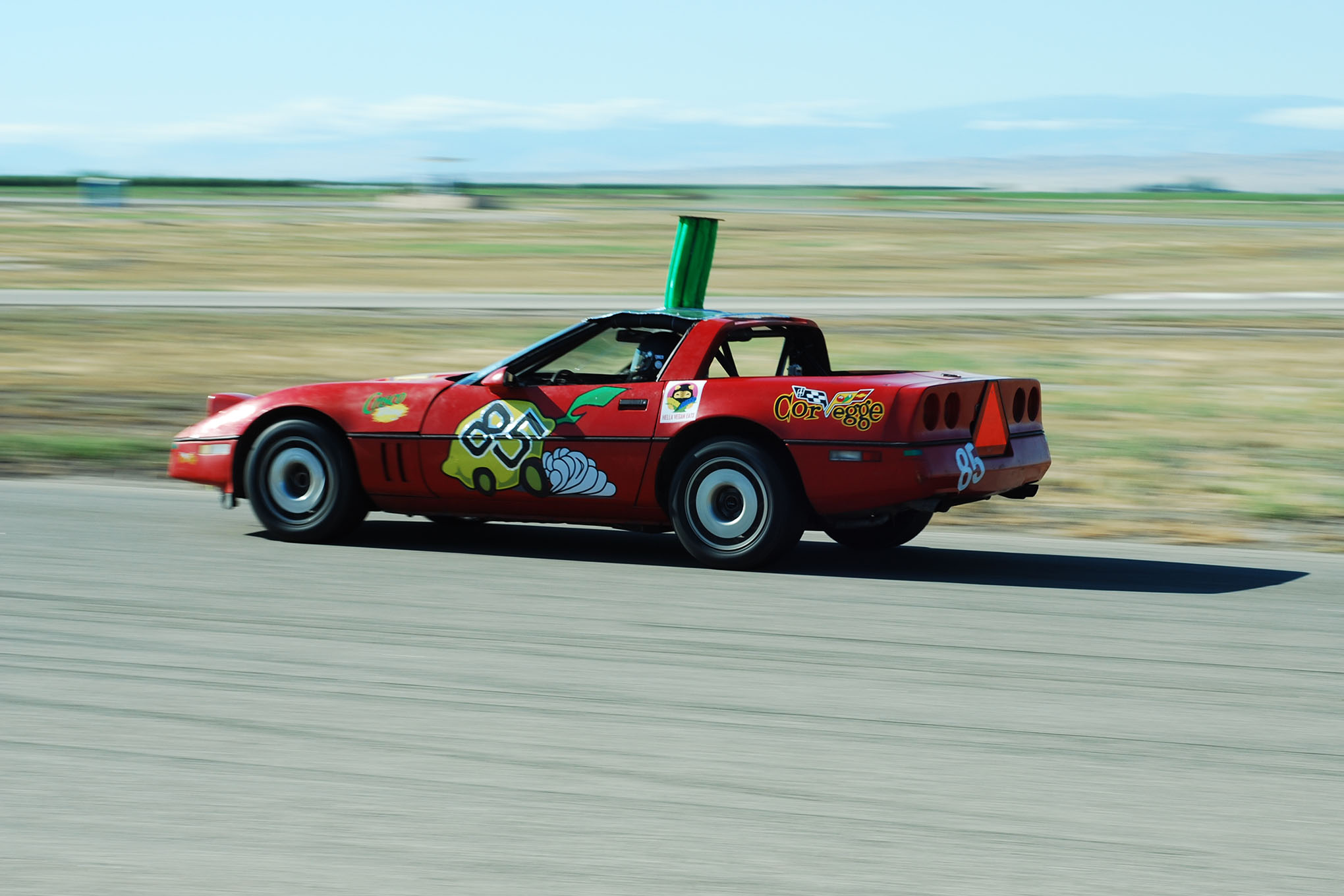
Swapping a high-tech German four-cylinder diesel into a spindly little Italian sports car is nice and all, but this is America! What the series really needed, back in 2012, was a Detroit-made diesel V8 delivering all its torque to a genuine Chevy Corvette. “Spank” Spangler, who has built superior racing machines ranging from a Harley-Davidson-powered Toyota Prius to a Caterpillar backhoe during his lengthy and complex Lemons racing career, installed an Oldsmobile 350-cubic-inch diesel V8 into a C4 Corvette, introducing this high-performance sports car at the 2012 Arse Sweat-a-Palooza in California.
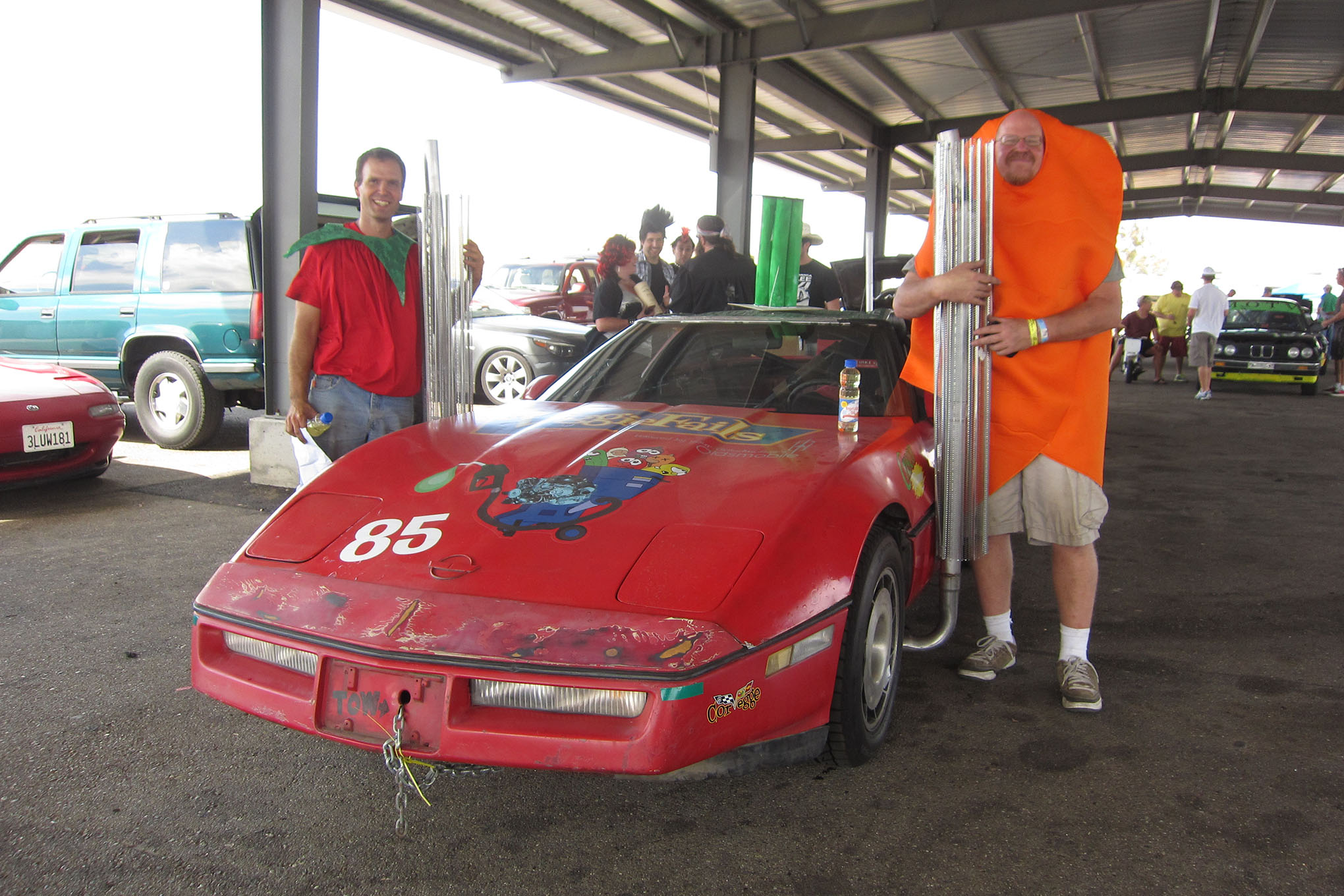
Pure, eco-friendly vegetable oil was this car’s fuel, and so it was known as the Corvegge.
The team members dressed as healthy vegetables for the 2012 Thunderhill race, and Spank shared a drink of fuel with his race car. Try doing that with your dino-juice diesel (no, really, don’t do it).
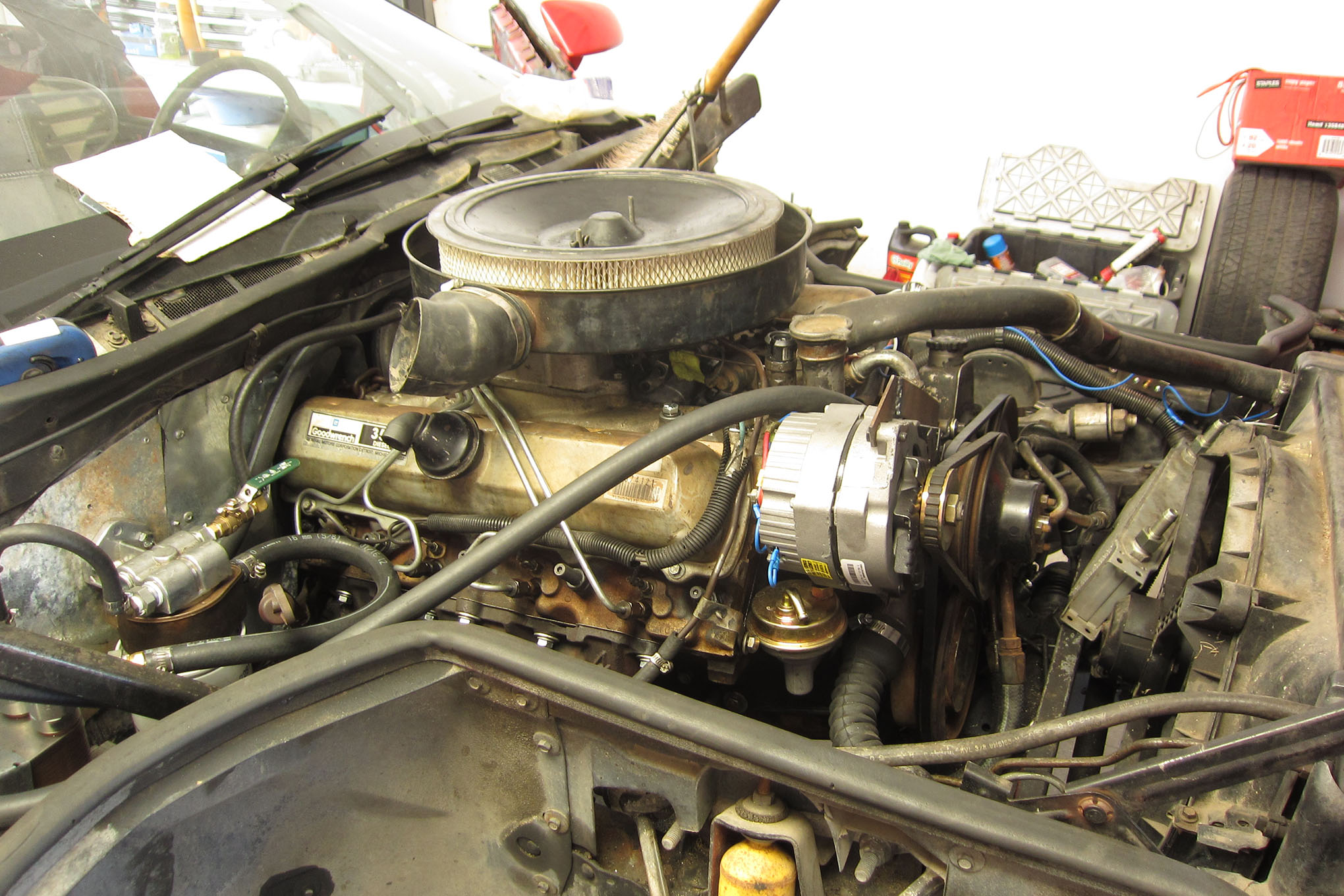
The Corvegge was neither fast nor reliable, but by (the very low) Lemons Corvette standards it performed well enough on the track. The Oldsmobile 350 diesel was rated at 120 horsepower and 220 lb-ft of torque when new, while the gasoline Chevrolet 350 originally installed in the 1985 Corvette made 230 horses and 330 lb-ft. A dyno test showed that the Corvegge made 77 hp at the wheels.
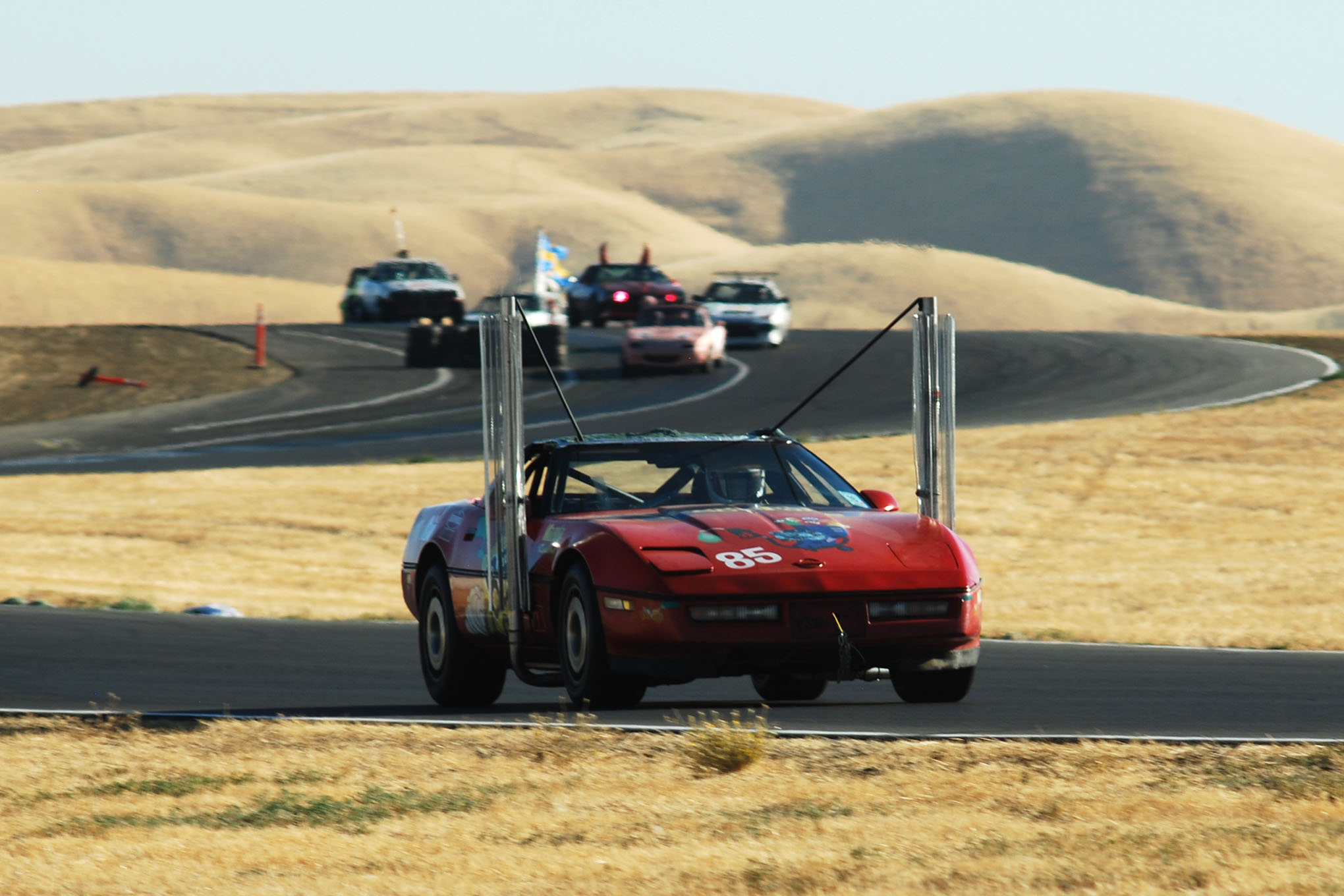
The Corvegge was the slowest car at its debut race, and it finished 127th out of 136 entries (beating a Camaro and two Mustangs in the process). The team finished 148th out of 166 at Thunderhill 2012 and 148th out of 154 at the 2013 Button Turrible.
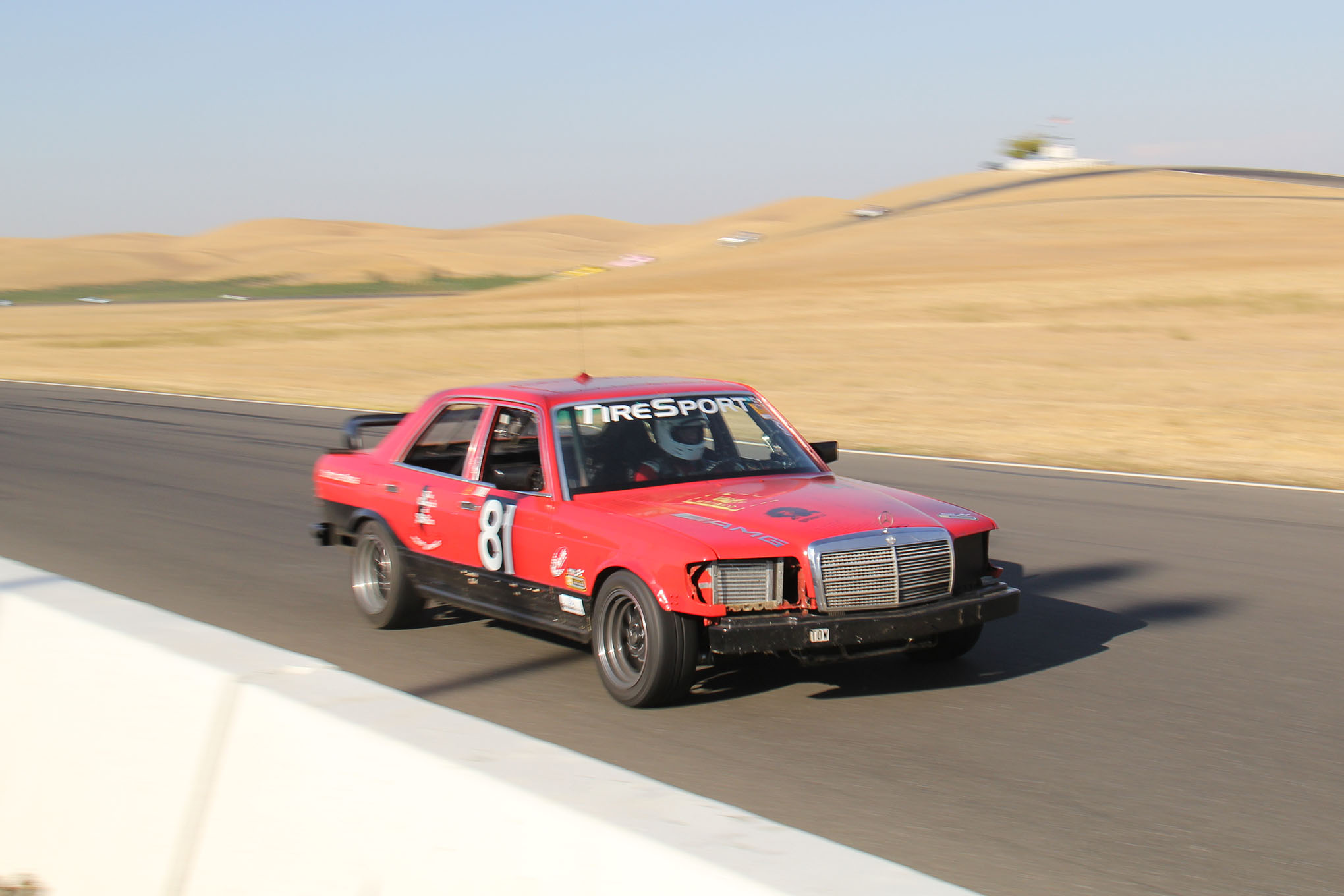
If you plan on turning a lot of laps at a lot of races under diesel power, the Mercedes-Benz has proven itself to be the wisest choice. The Washington-based Dirty Little Freaks team arrived at the 2012 Pacific Northworst race with their OM617-engined 1982 300SD W126 and proceeded to win the Most Heroic Fix award for complex fuel-system repairs.
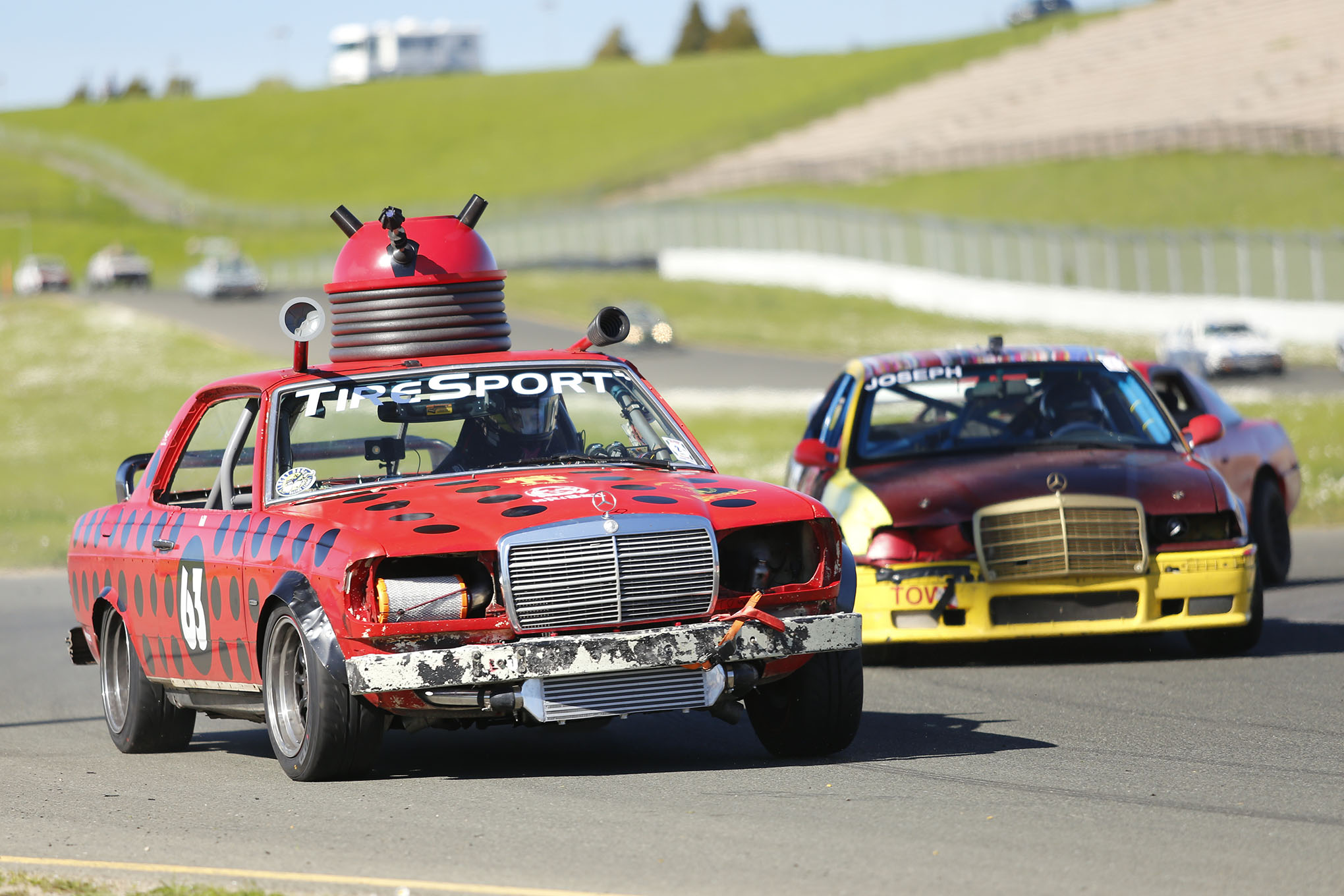
The Dirty Little Freaks went on to be very serious diesel racers, eventually replacing their stodgy sedan with a sporty 1979 300CD coupe. They have competed in 14 Lemons races with their Stuttgart diesel machines, winning Class C at the 2013 Thunderhill race. Their coupe’s Dalek theme looked great on the track.
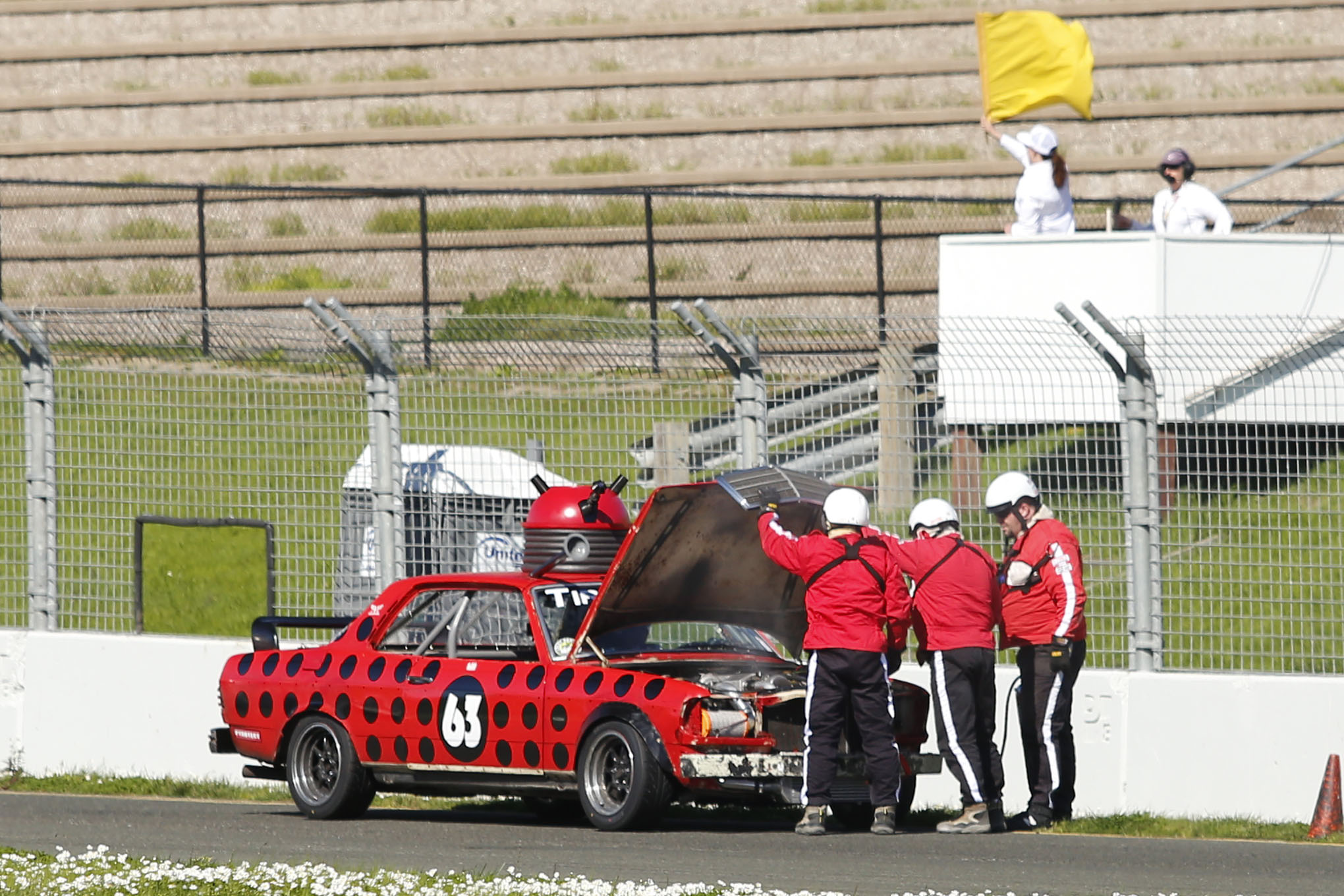
While the Freaks have performed their share of repairs at race tracks, the OM617 has been one of the most reliable engines in Lemons history. This is one of the few engines with a reputation for street reliability that also holds together well under endurance-racing conditions (street-sturdy engines that usually fail in our races include the Chrysler Slant-6, all Honda four-cylinders, the small-block Chevy, and every engine ever made by Toyota).
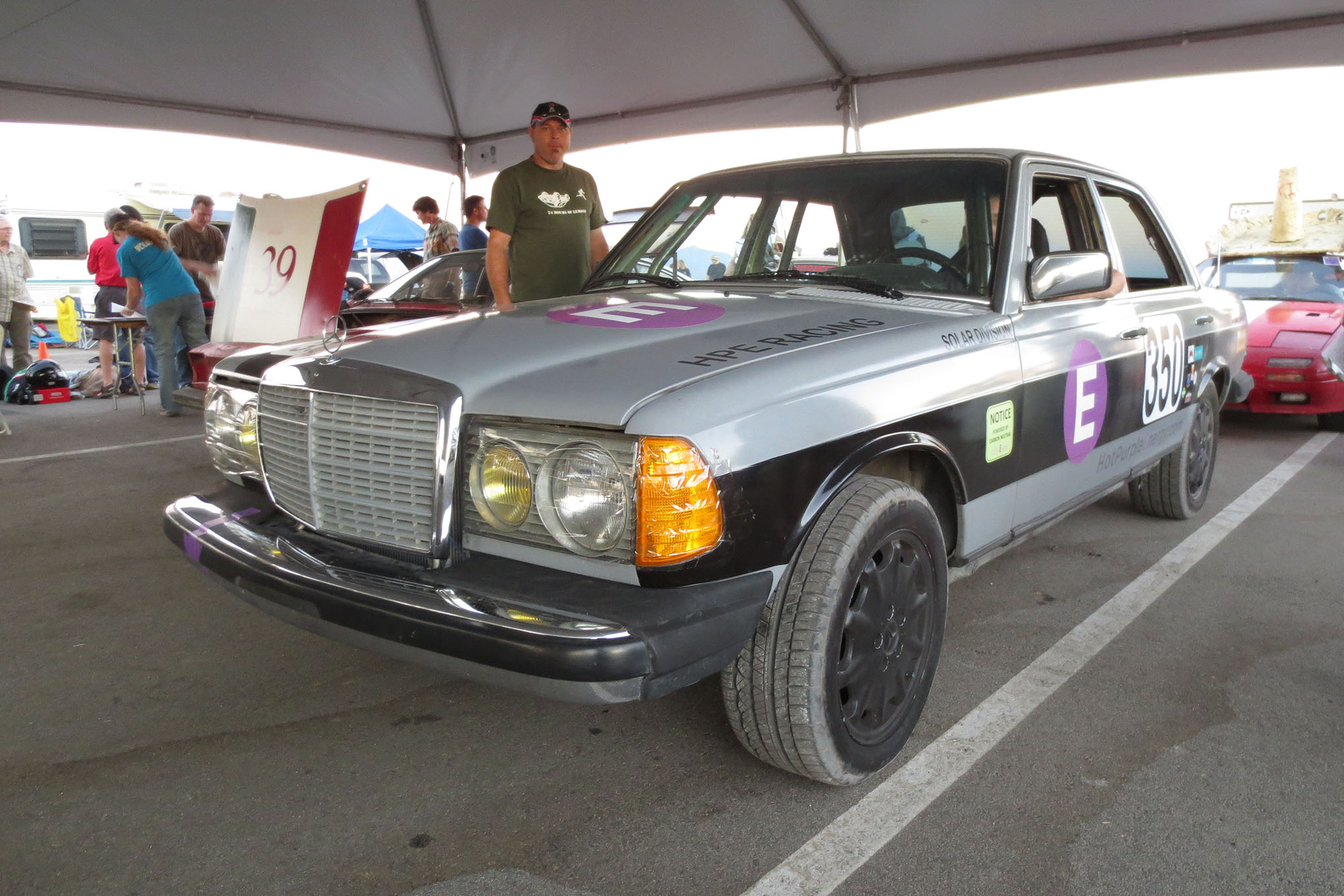
We keep hoping to see a diesel race car running on human fat from a liposuction clinic, but recycled fry grease will have to do until that glorious day arrives. The From Chips To Chuckwalla team, employees of an alternative-energy firm in the Coachella Valley, brought their fry-grease-burning, OM617-engined Mercedes-Benz W123 to the 2012 Arse Freeze-a-Palooza at Chuckwalla Valley Raceway with expectations of Class C domination.
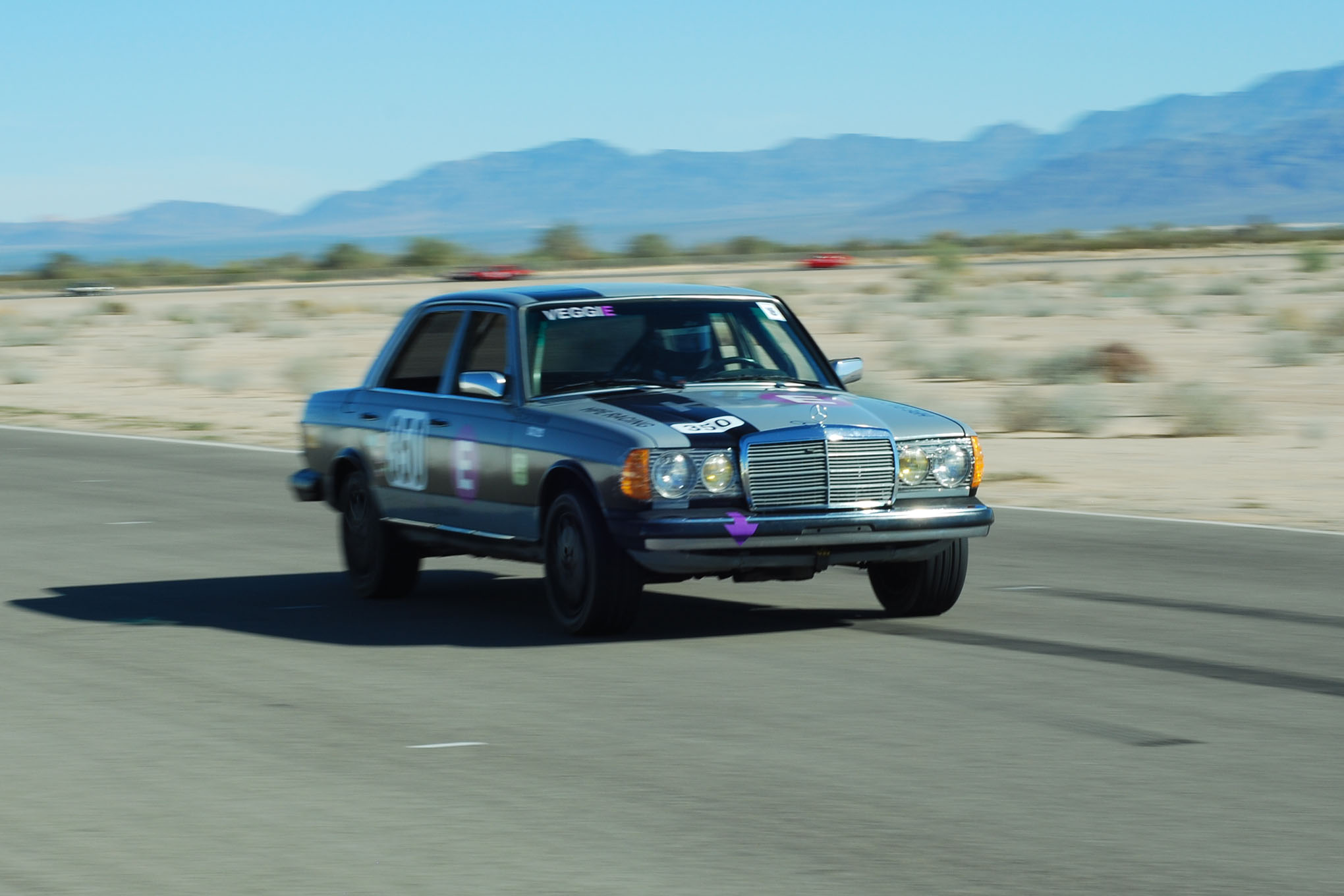
From Chips To Chuckwalla finished 88th out of 114 entries at that race, beating two Audis, a Porsche 944, two Acura Integras, an RX-7, a BMW E30, and a Mustang in the process. At the 2014 Button Turrible race, the team got P92 out of 114.
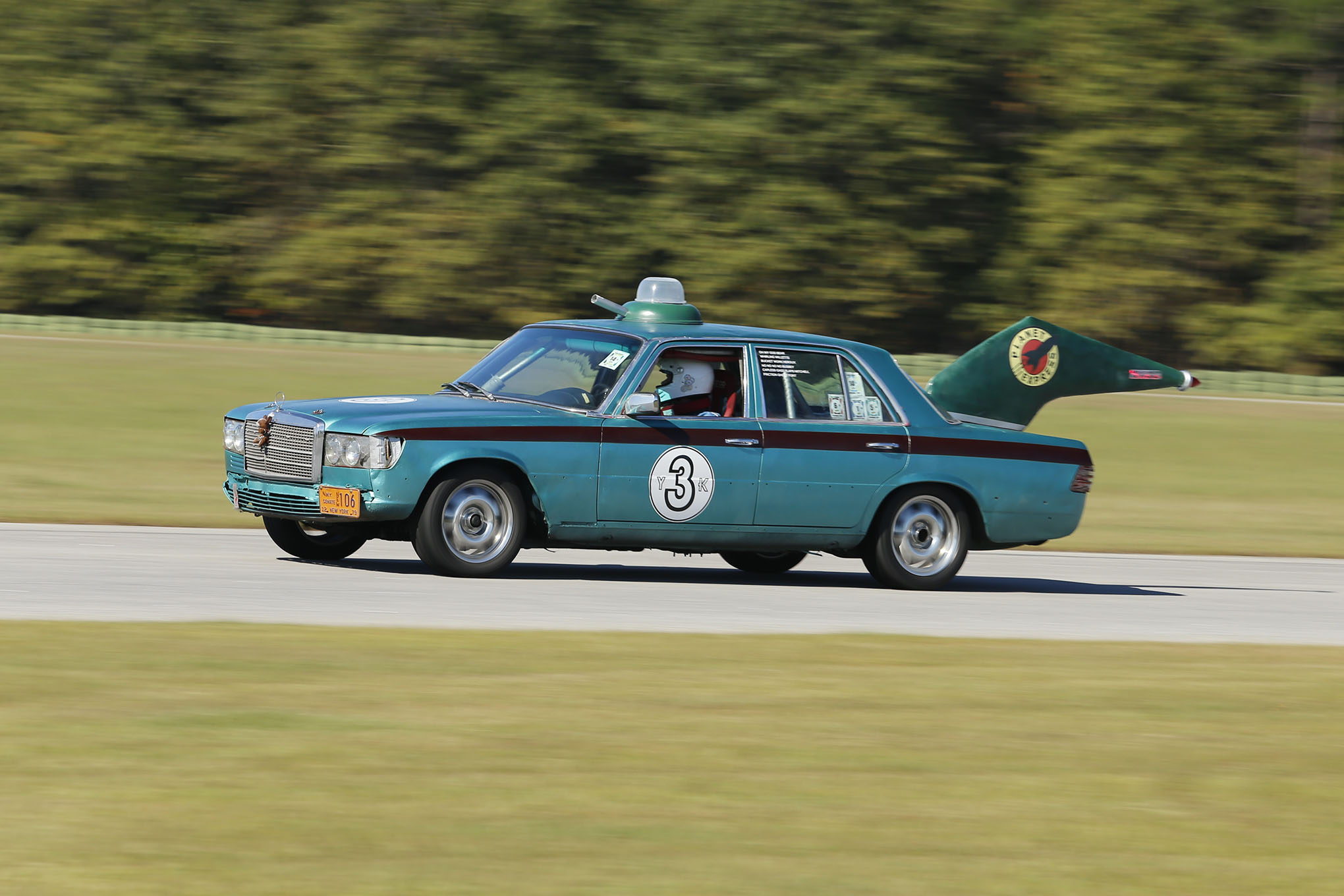
The team with the most diesel-powered Lemons races under its belt is South Carolina’s Idle Clatter Racing. Idle Clatter started out with a 1979 Mercedes-Benz 300SD— yes, that’s another OM617-powered W123— at the Lemons South Fall 2013 race. They had a pretty good Planet Express theme, and they finished 65th out of 117 entries at that race— incredibly good for a rookie Class C team, and it was enough to win Idle Clatter the top prize of Lemons racing their first time out.
To get an idea of the not-quite-blistering pace set by the Planet Express 300SD, here’s in-car video of the 52-horsepower Zero Budget Racing Isuzu I-Mark chasing down and passing the Mercedes-Benz.

One diesel W123 race car wasn’t enough, so they added this “Toyota Hilux” pickup truck to their racing fleet. Look closely at the body lines and you’ll see the Mercedes-Benz showing through; with some clever cut-and-paste of 1982 Toyota truck body parts and the fabrication of a pickup bed, Idle Clatter created a convincing Hilux out of a 1979 Mercedes-Benz 300D. Thus was the Toyocedes 300SR5D born.
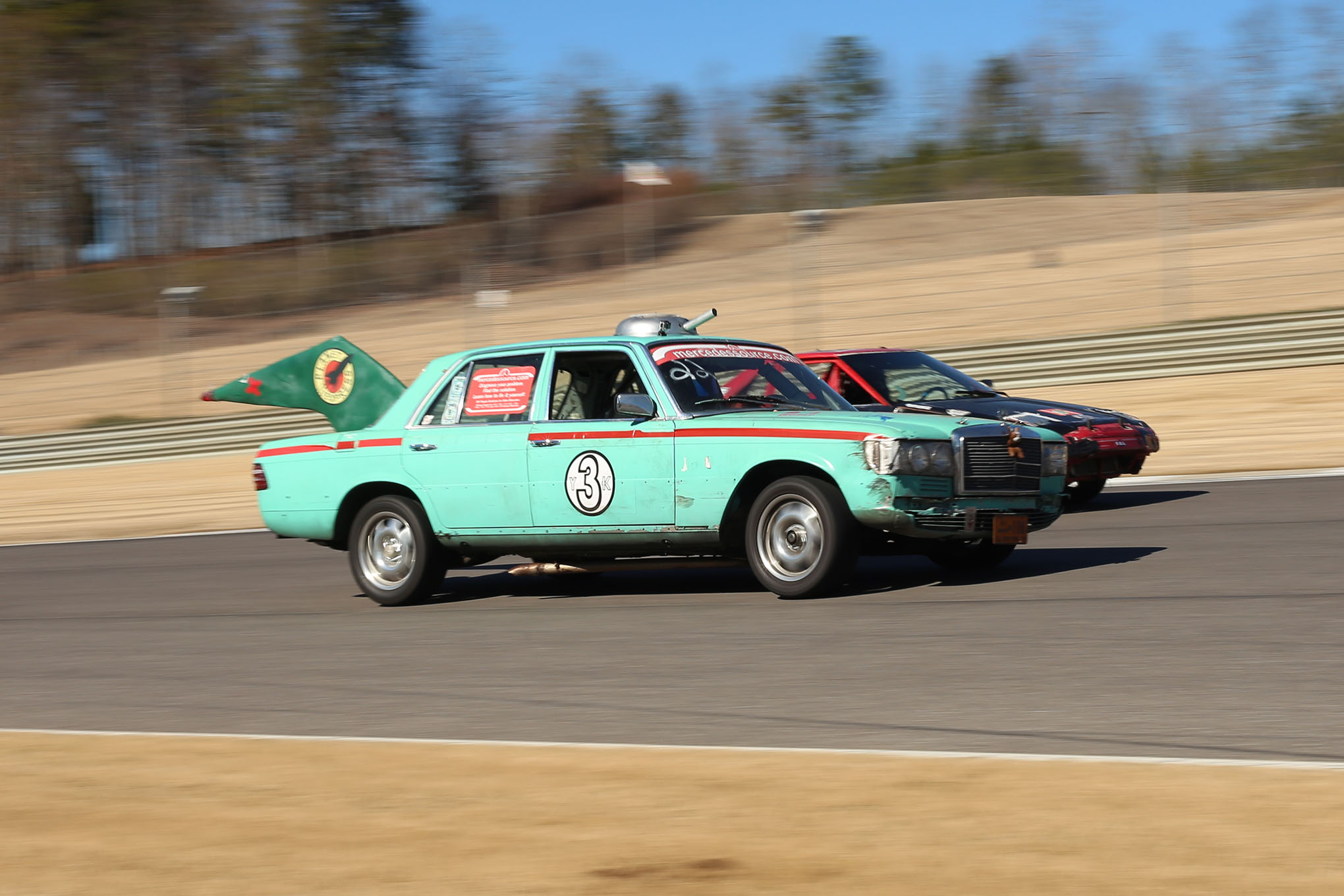
Idle Clatter continued to stack up trophy hardware; the sedan won Class C at Sebring in 2014.
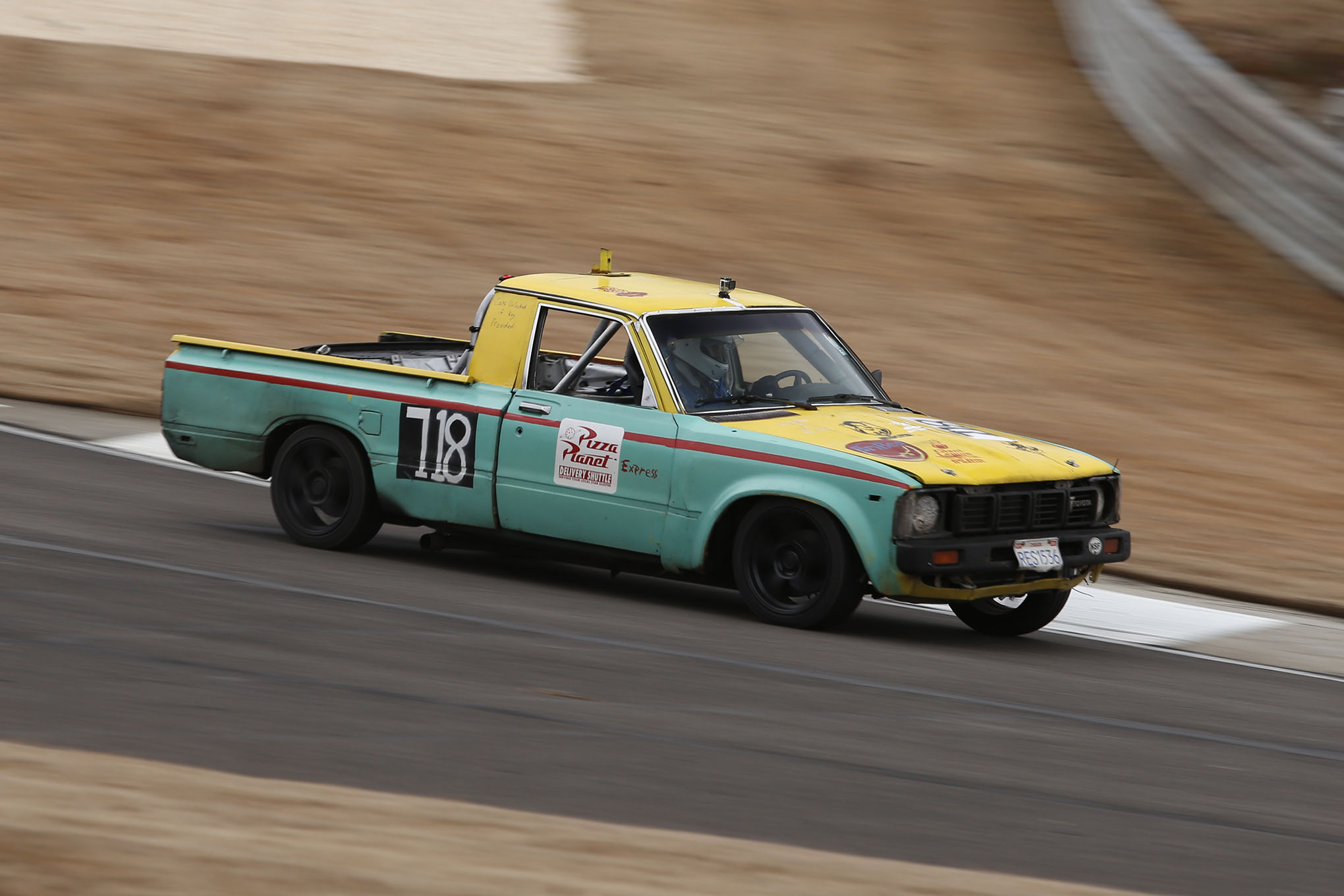
The team won the Index of Effluency with the truck at the 2015 South Fall race, then Class C at the 2016 Southern Discomfort. Now both the car and the truck compete in Class B, where reliability and long stint times give each a good shot at wins in the medium-speed class.
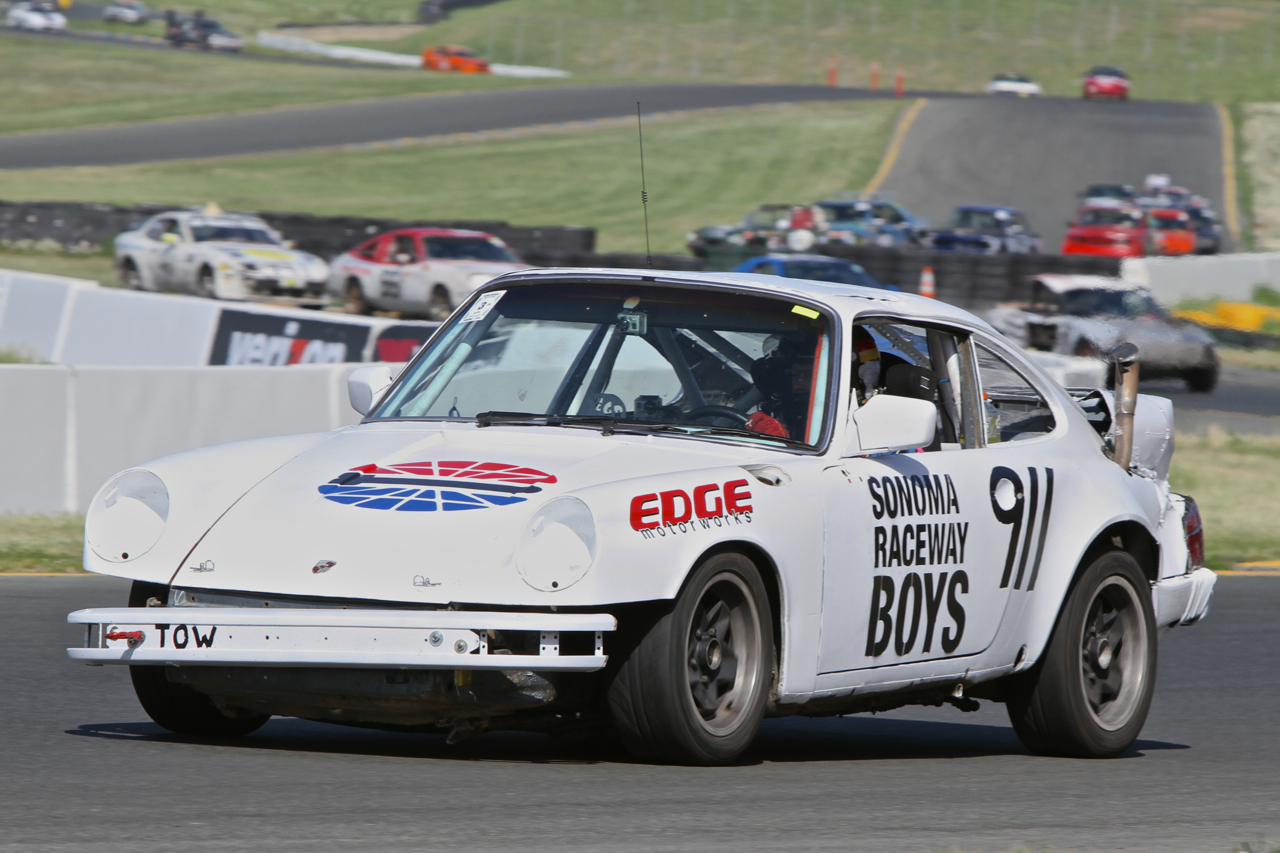
The Corvegge enraged Corvette purists in most gratifying fashion, but their rage over a diesel swap was minor next to what happened when Porsche purists learned about Ferkel the Nein-11. Yes, Hella Shitty Racing in California bought a rollover-victim 1983 Porsche 911 for a couple thousand bucks, extracted the engine for use in another (non-Lemons) car, and sold off the interior and trim pieces for more than they’d paid for the car. Then they did something either sacrilegious (if you’re a Porsche zealot) or brilliant (if you’re anybody else): swapped a Volkswagen TDI engine into it.
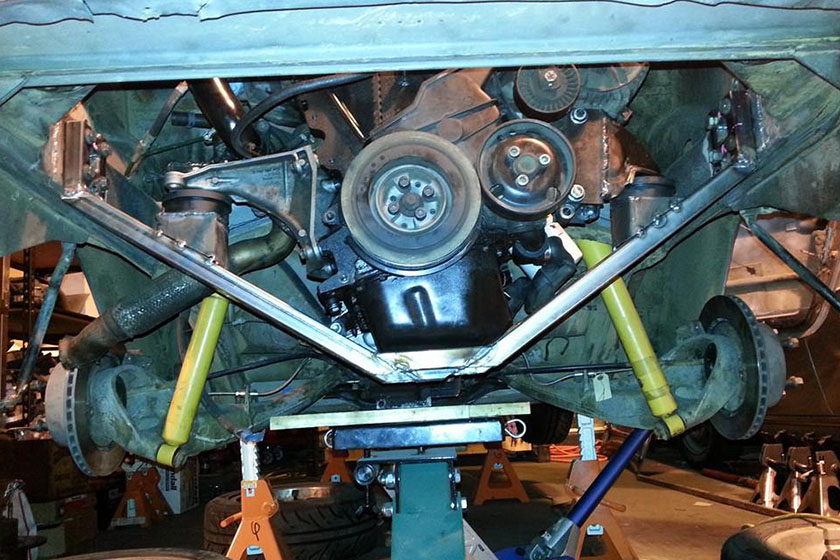
Pulled from a 300,000-mile Jetta, this engine was rated at 91 horsepower when new. Ferkel turned out to be not particularly quick at its debut in the 2014 Sears Pointless race, but Hella Shitty Racing hung in there and pulled off a Class C win at the 2014 Thunderhill race.
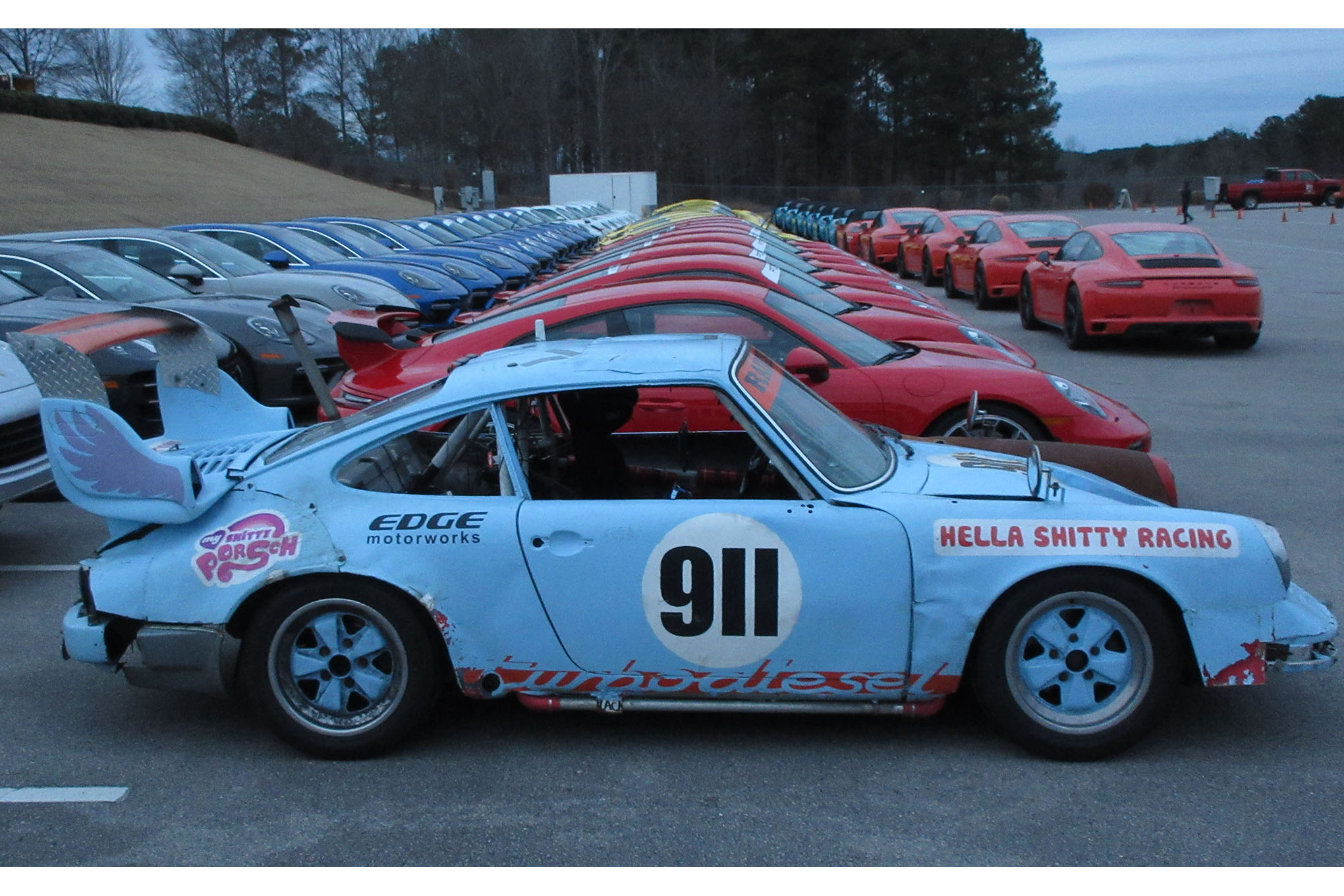
Last year, Lemons Legend Tsoggy bought Ferkel (now painted blue) and brought it to his native Pennsylvania, where it now serves as his most reliable daily driver. That is, a windowless, fully-caged diesel race car with no heater, in the Midwest.
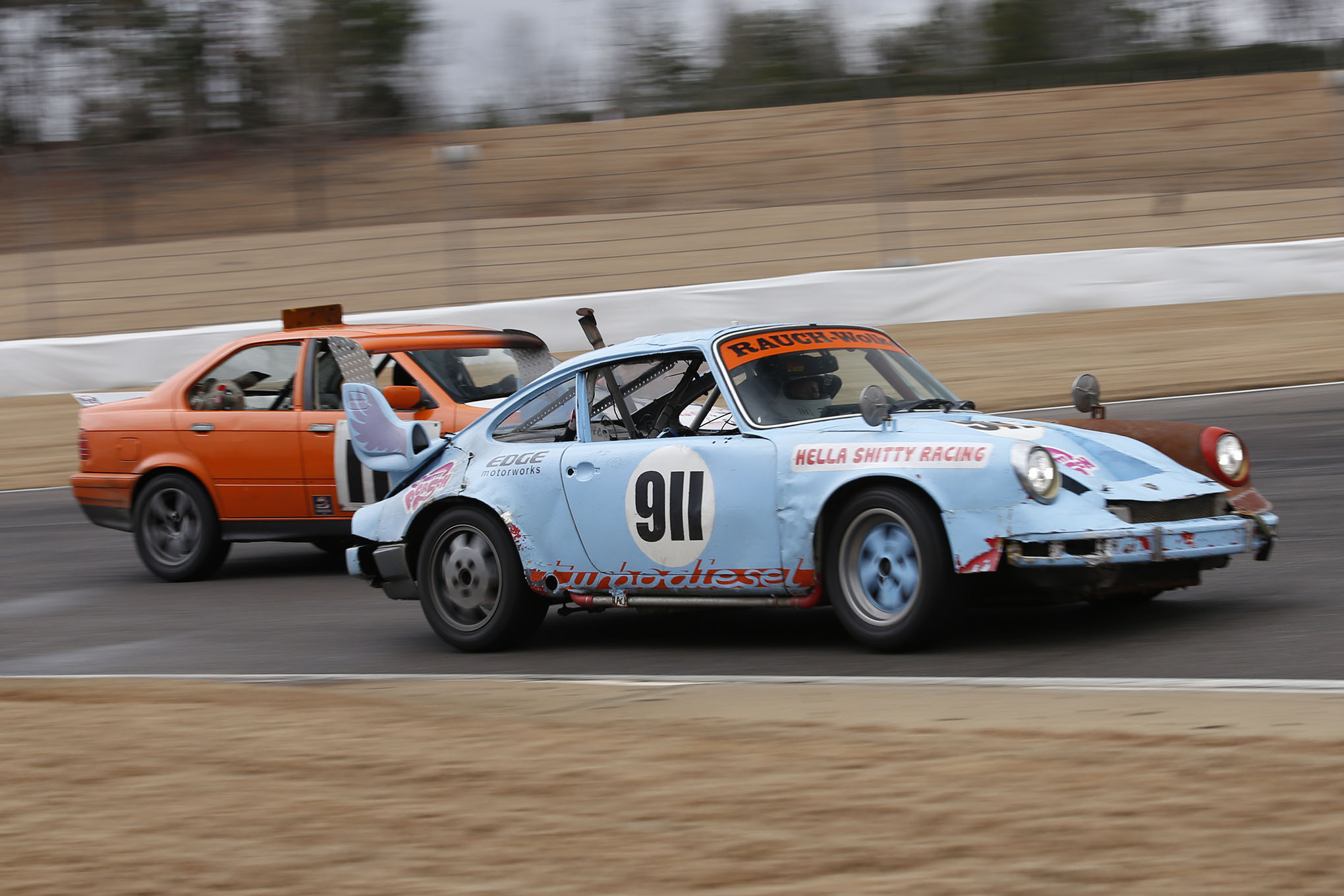
For the 2018 ‘Shine Country Classic in Alabama, Tsoggy drove Ferkel to the track and proceeded to get a Class C win; the judges decided that a change of ownership to a Simca 1204 racer merited placement back into the most important Lemons class.
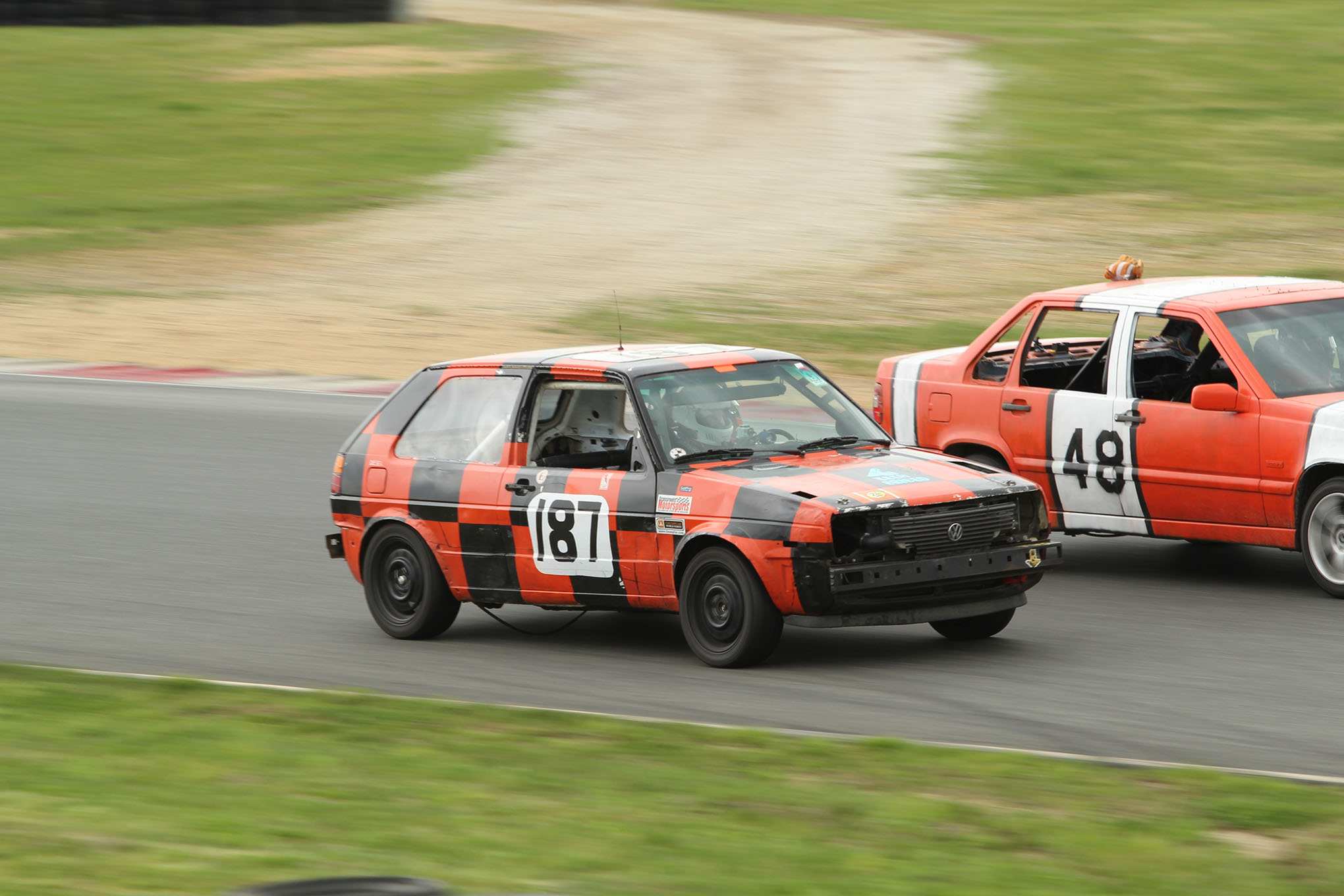
In the early days of Lemons racing, a team called Focke Ewe campaigned a very ordinary Volkswagen GTI. The team then became The Muttonheads, eventually swapping in a TDI engine in 2013 and doing yet another name change: Torque Junkie Racing. The TDI GTI placed 24th out of 139 entries at the 2013 Real Hoopties of New Jersey, with lap times coming within a few seconds of the quickest cars, more proof that the VW TDI engine has the potential to contend for the higher reaches of the standings at our races.
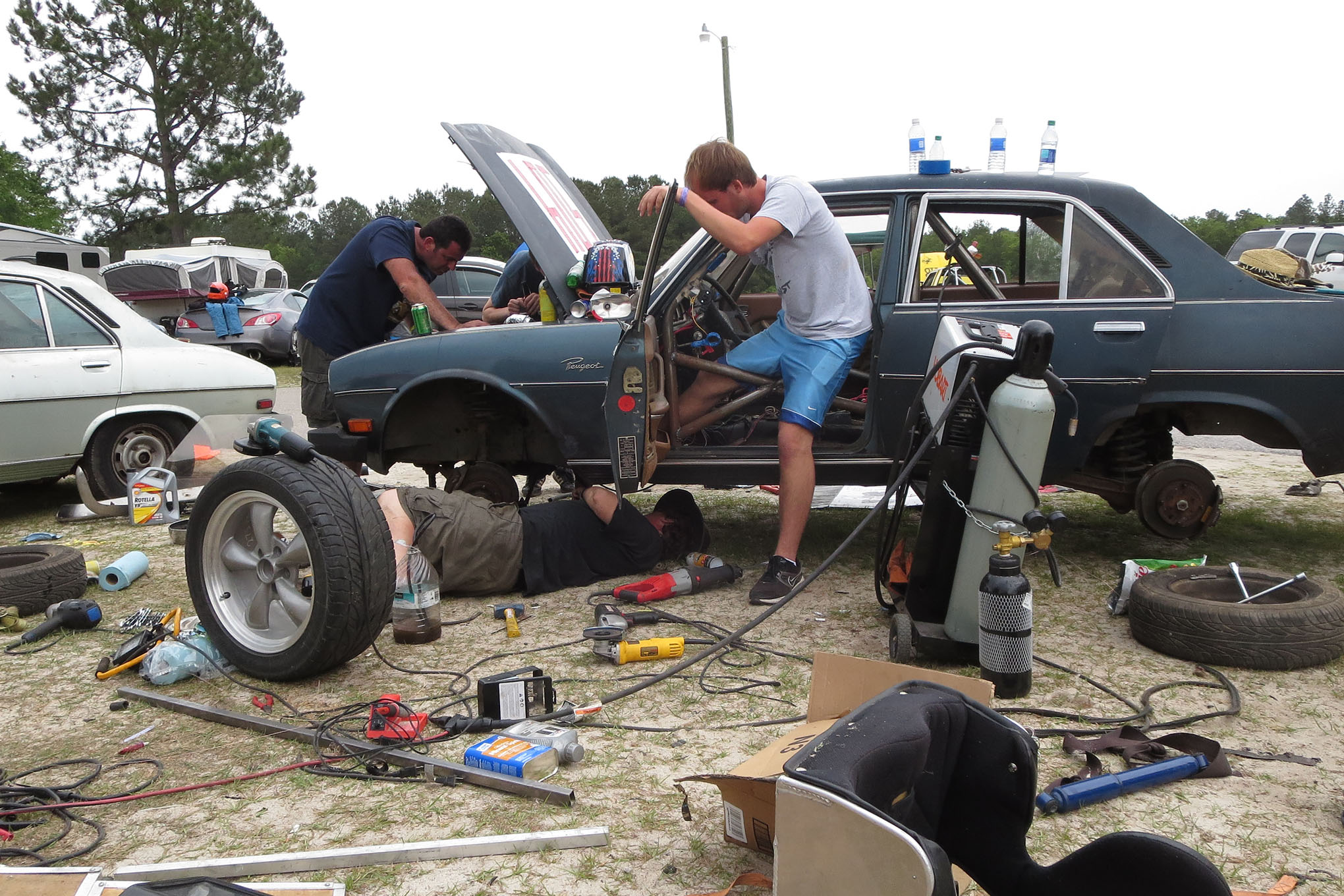
Many Peugeot 504s were sold in the United States with diesel power, but only a single gasoline-burning example has raced in the 24 Hours of Lemons. We love French cars and we love diesels, so it pleased us greatly when we learned that Sputnik Racing would bring a genuine Peugeot 504 Diesel— plus two parts cars— to the 2016 Southern Discomfort race. Unfortunately, it proved impossible to get the car to run well enough to pass the tech inspection, so we’re still waiting to see our first French diesel competing in the series.
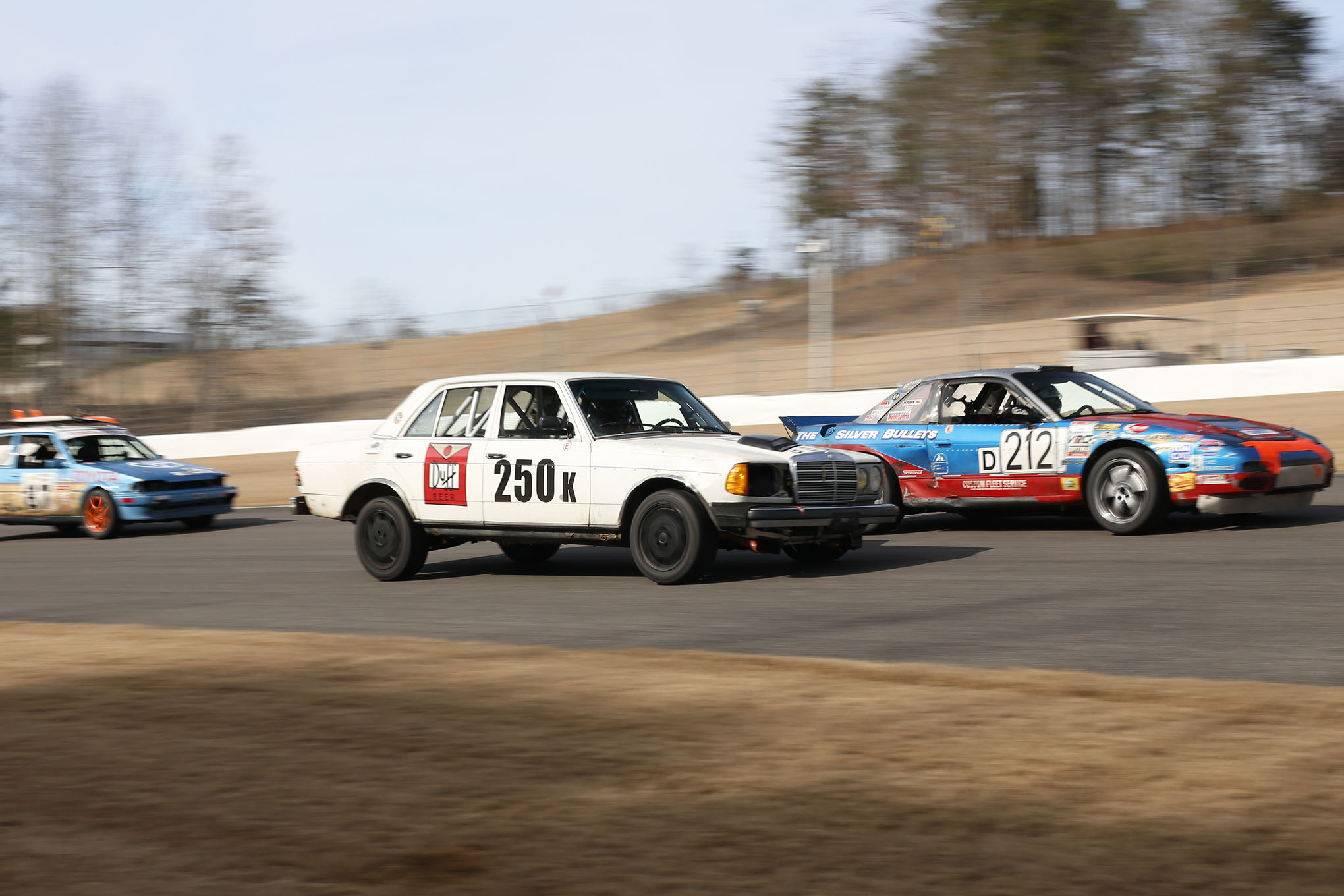
Team Duff Beer raced a Honda Civic sedan at most of the Southern Lemons races from 2010 through 2016, then things went a little haywire and the team showed up with a 1981 Jet Electrica 007 electric race car, winning Index of Effluency glory. After that, it seemed like a fine idea to add a 1981 Mercedes-Benz 240D to the Duff Beer stable.
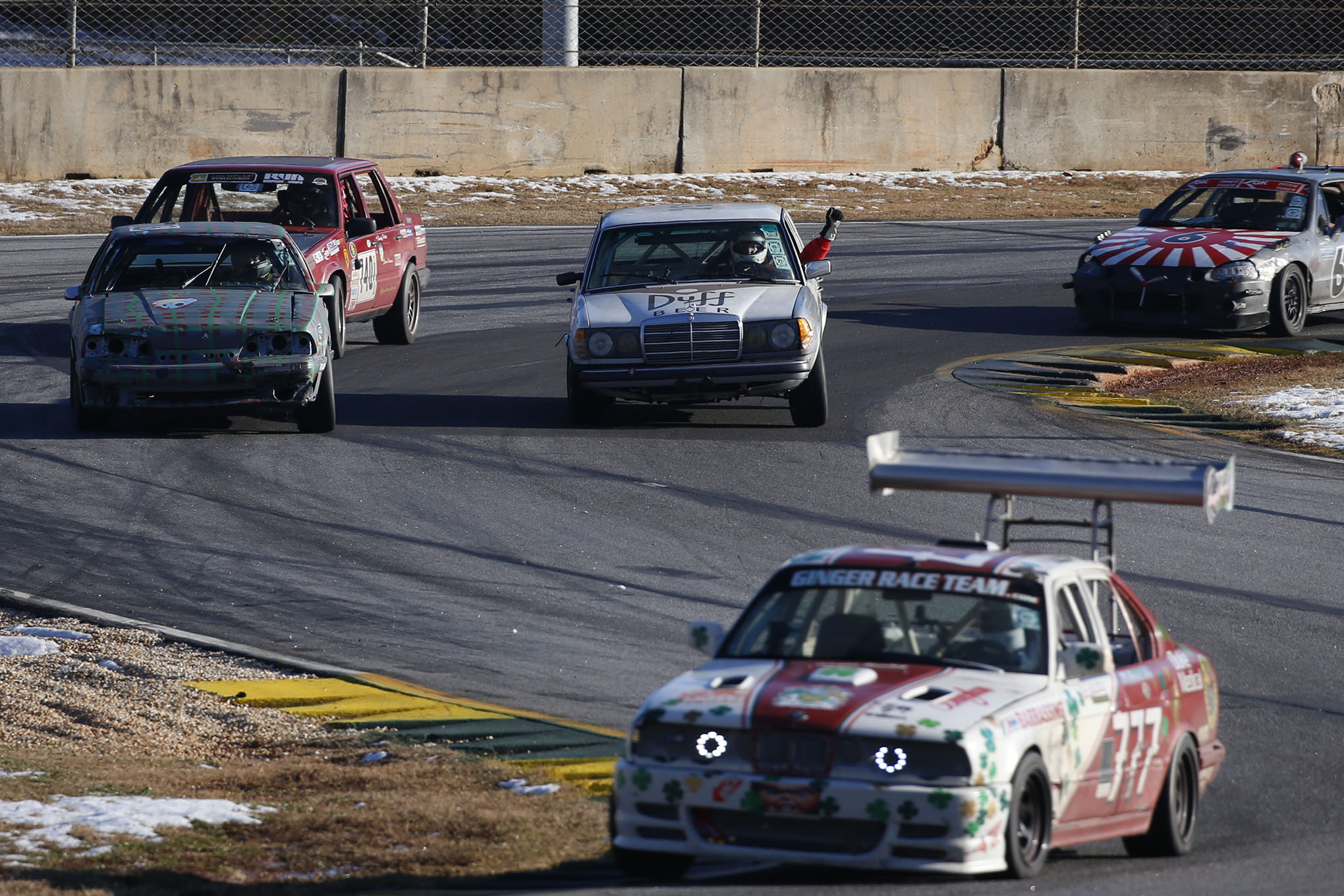
The car was the first diesel W123 to compete in Lemons without the five-cylinder OM617 turbo engine; this one still had the OM616 naturally-aspirated four-cylinder engine, rated at 72 horsepower. This car was by far the pokiest vehicle on the track at the 2017 Kentucky Demo Derby, more than 20 seconds slower per lap than Speedycop’s Trippy Tippy Hippy Van and probably slower than the sweeper truck that clears all the broken parts off the track after each race session.
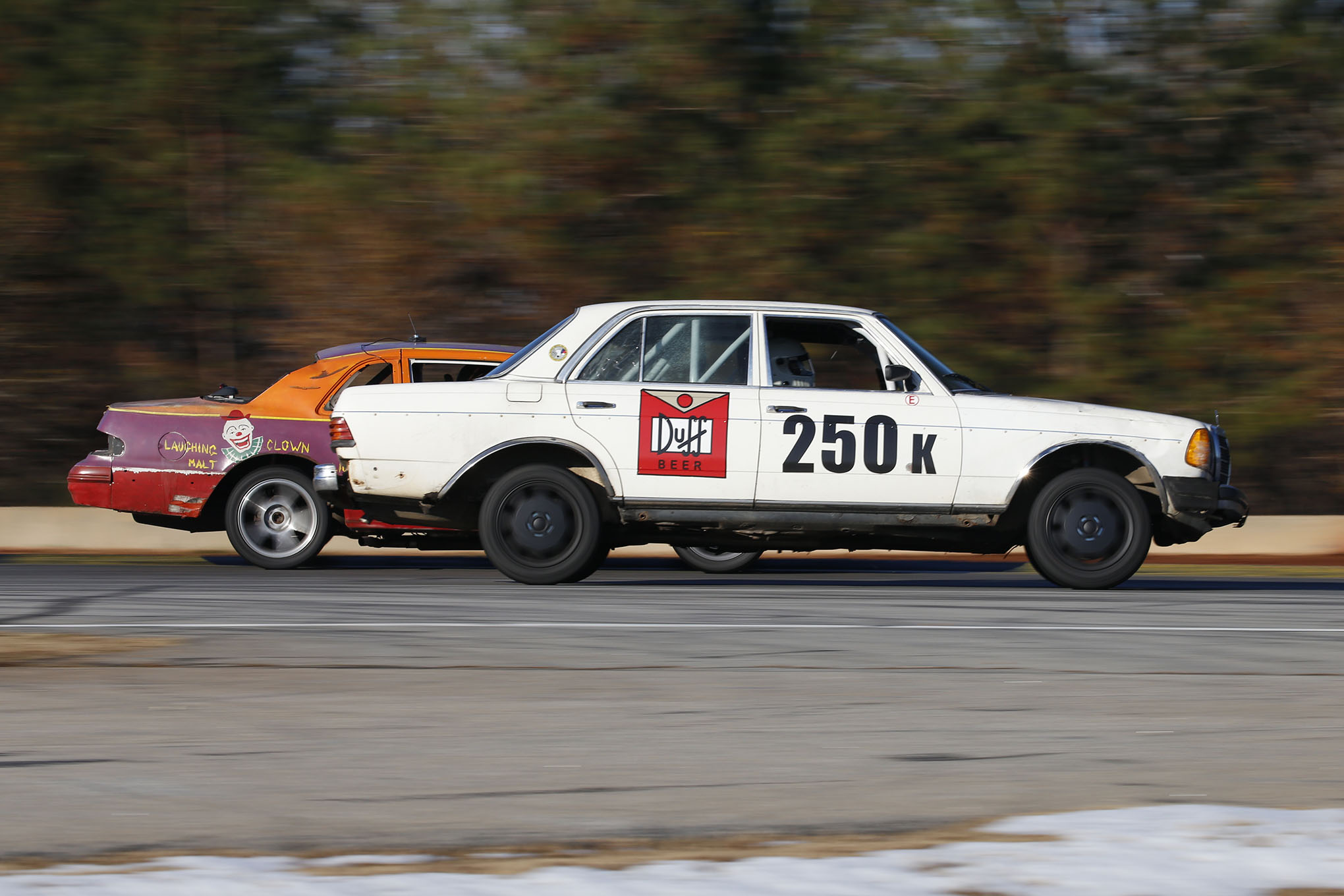
Lesson learned! The Duff Beer wrenches found a junkyard OM617 and upped the power to 120 horsepower. This made the Duff Beer W123 much more fun to drive, and it remained extremely reliable. At the 2018 season opener at Road Atlanta, the team finished 49th out of 94 entries, splitting all the piloting between just two drivers, and took home a well-deserved Index of Effluency for the achievement.
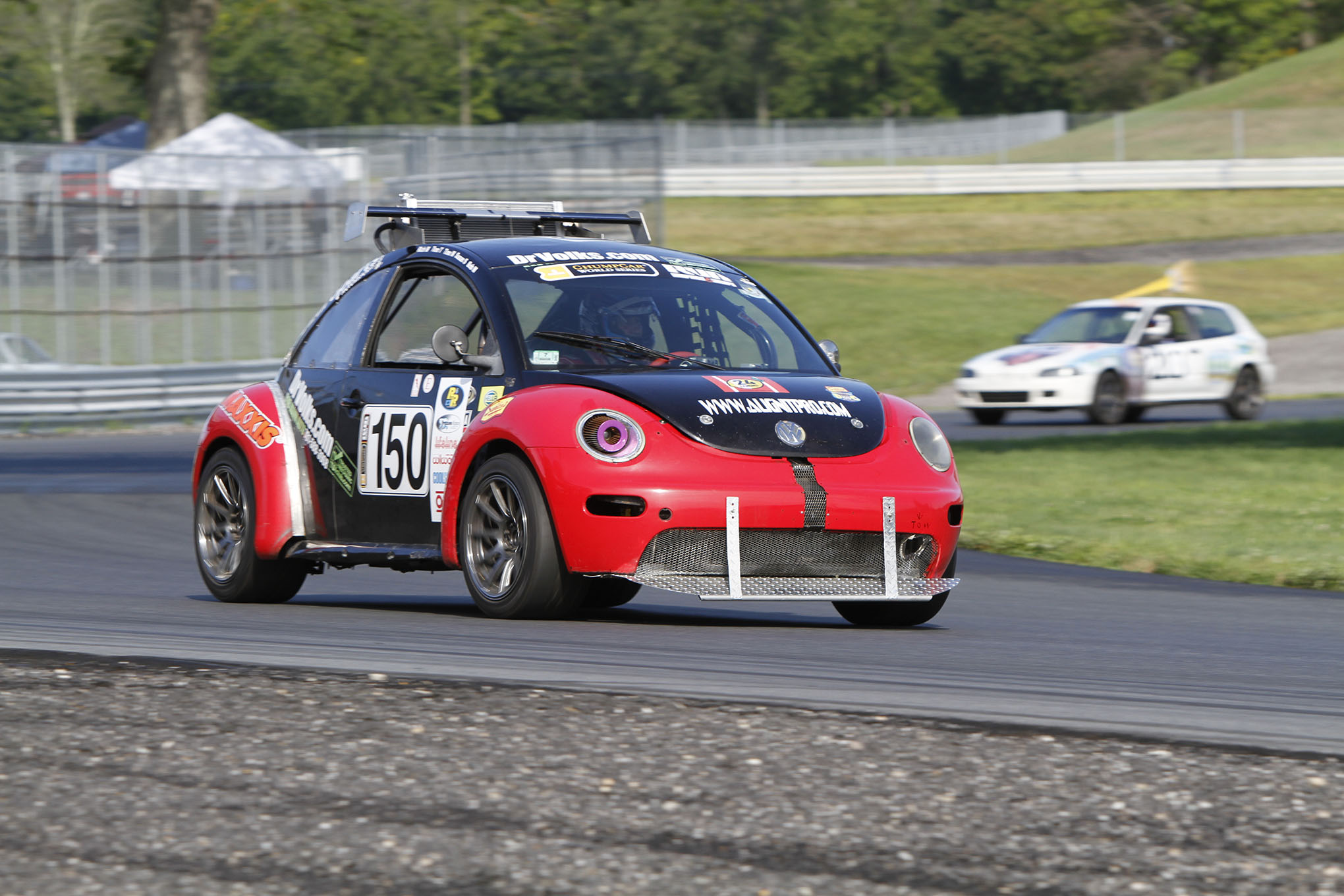
The first TDI New Beetle in the series arrived at the 2017 GP du Chargoggetcetera race, assembled and raced by Dr. Volks, and it was set up very nicely indeed. The judges put it in Class B with some handicap laps, and Dr. Volks ended up finishing in P96 out of 111 entries. We’ll see what happens with this car in future races.
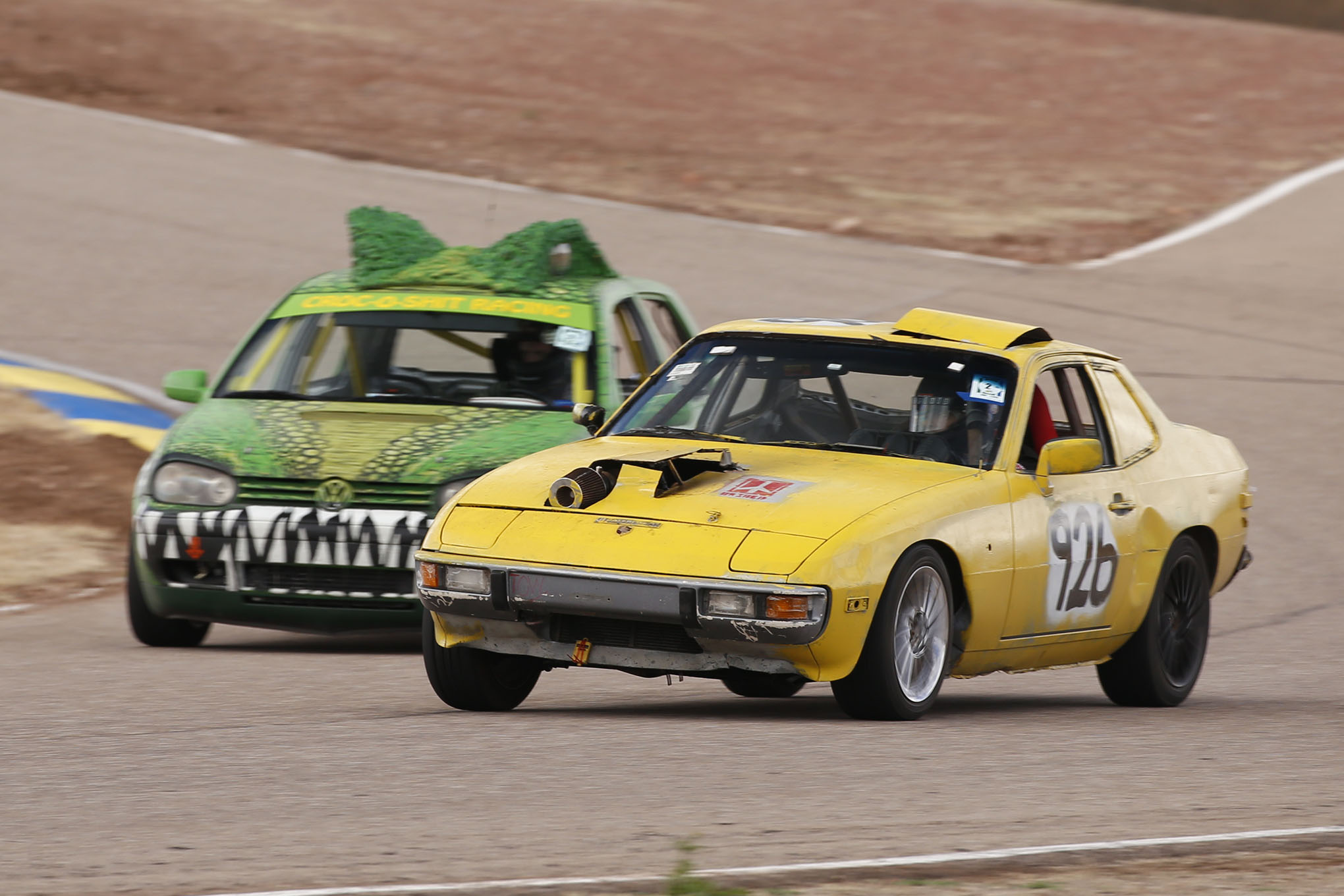
Team Totally Eclipsed By the Spank ran a Porsche 924 at the 2017 Arizona race, and its gasoline engine caused so many problems that they felt compelled to replace the fuel-injection system with a field-expedient SU carburettor swap with wood-block spacer. For the 2017 Buttonwillow race, the team opted to ditch the Audi Porsche engine completely, replacing it with a diesel straight-six from a 1980s Volvo.

The new engine is, in fact, a Volkswagen-designed unit, so the team has kept the swap within the extended Porsche family. This must come as a relief to the Porsche purists. The 80-horsepower diesel is something of a performance downgrade from the 97-horsepower original engine, but reliability and fuel economy went up significantly.
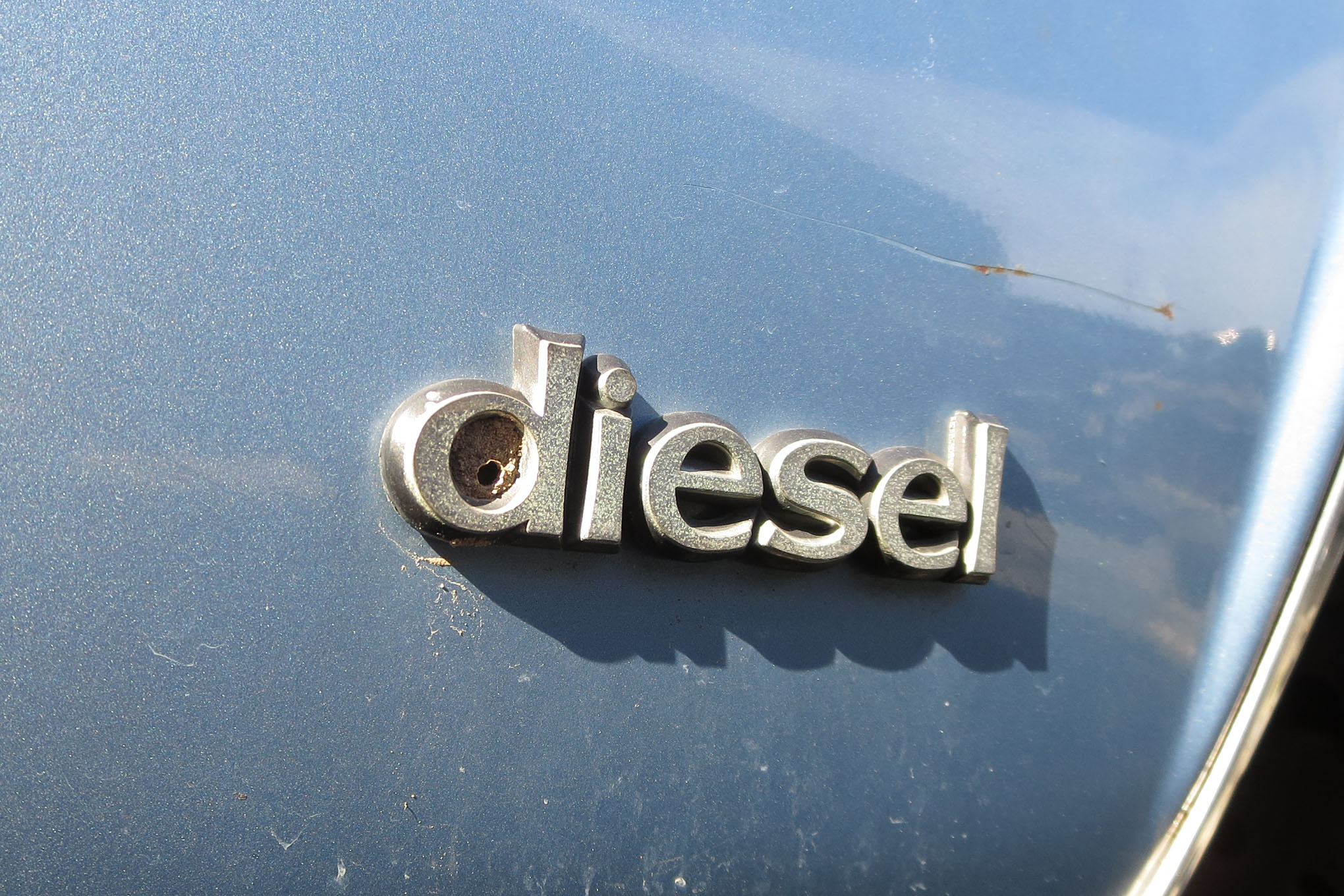
What’s next for diesels in the 24 Hours of Lemons? Well, Ford Tempos and Nissan Maximas were sold in North America with factory-installed diesel engines, and then there’s always the option of swapping a Detroit Diesel V8 into a Packardbaker!
